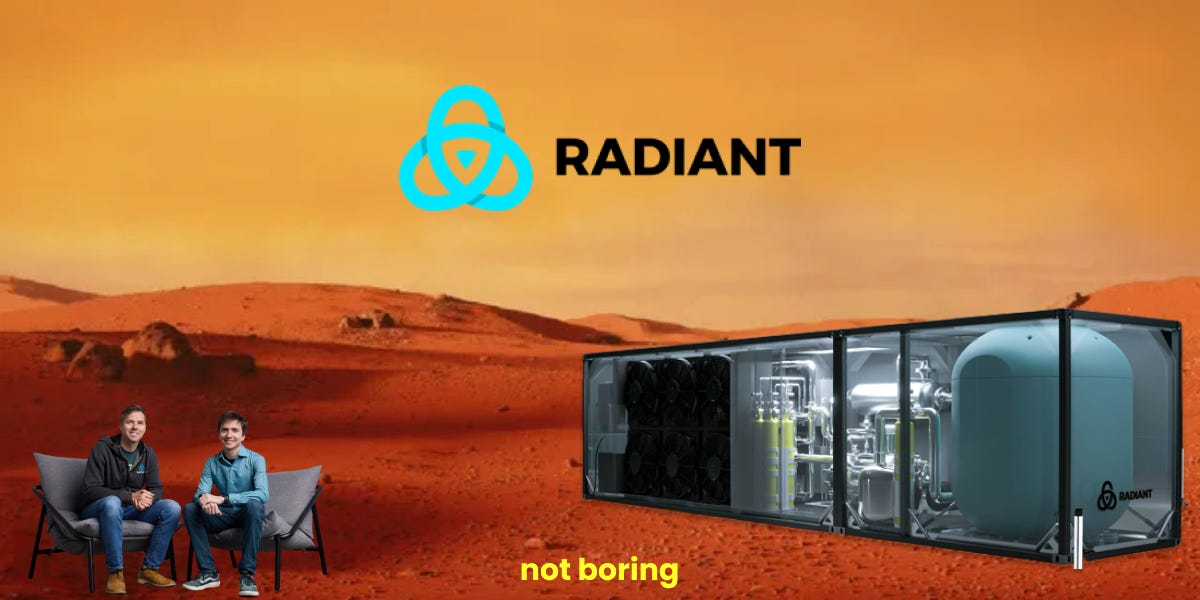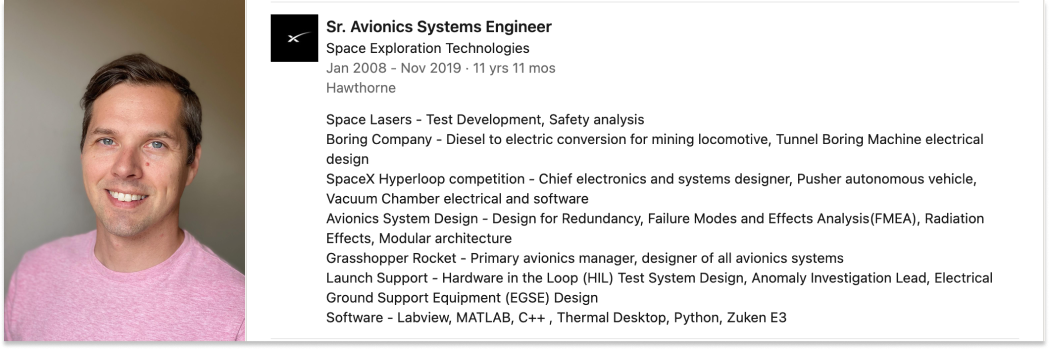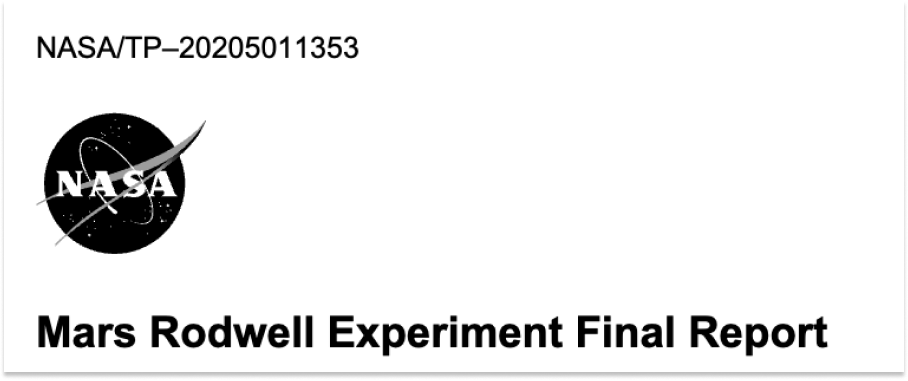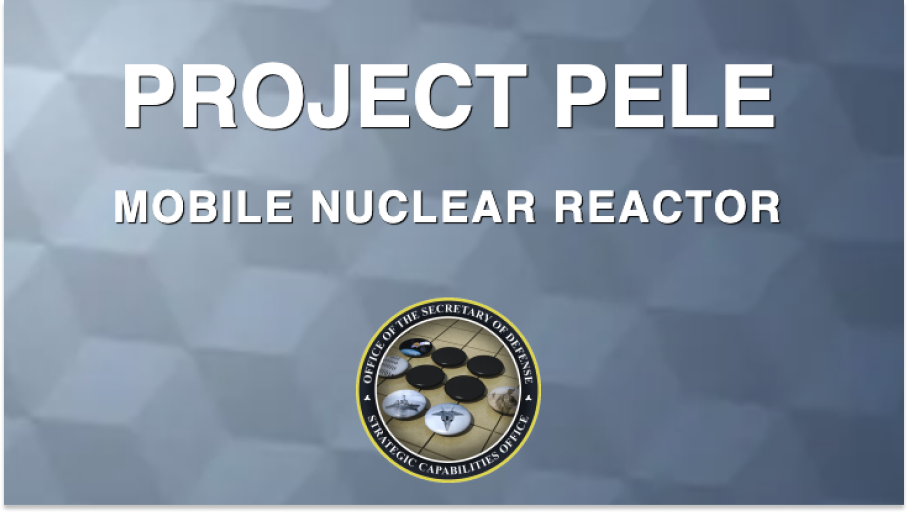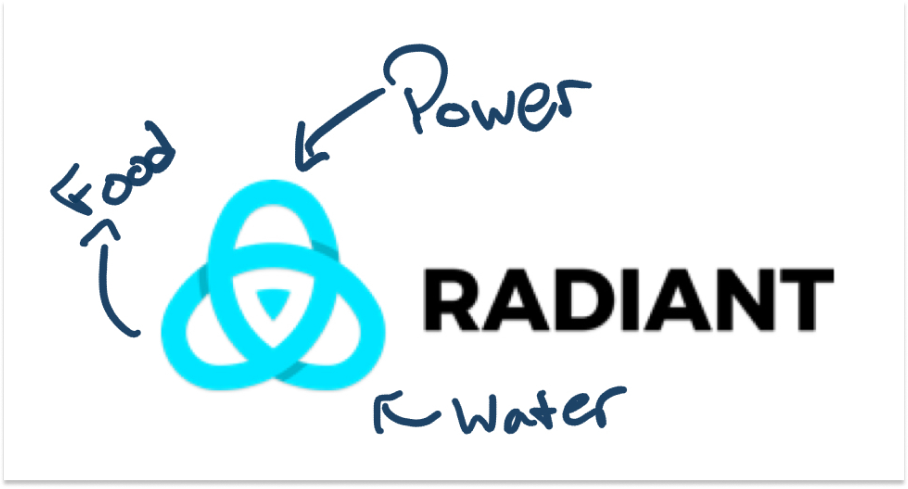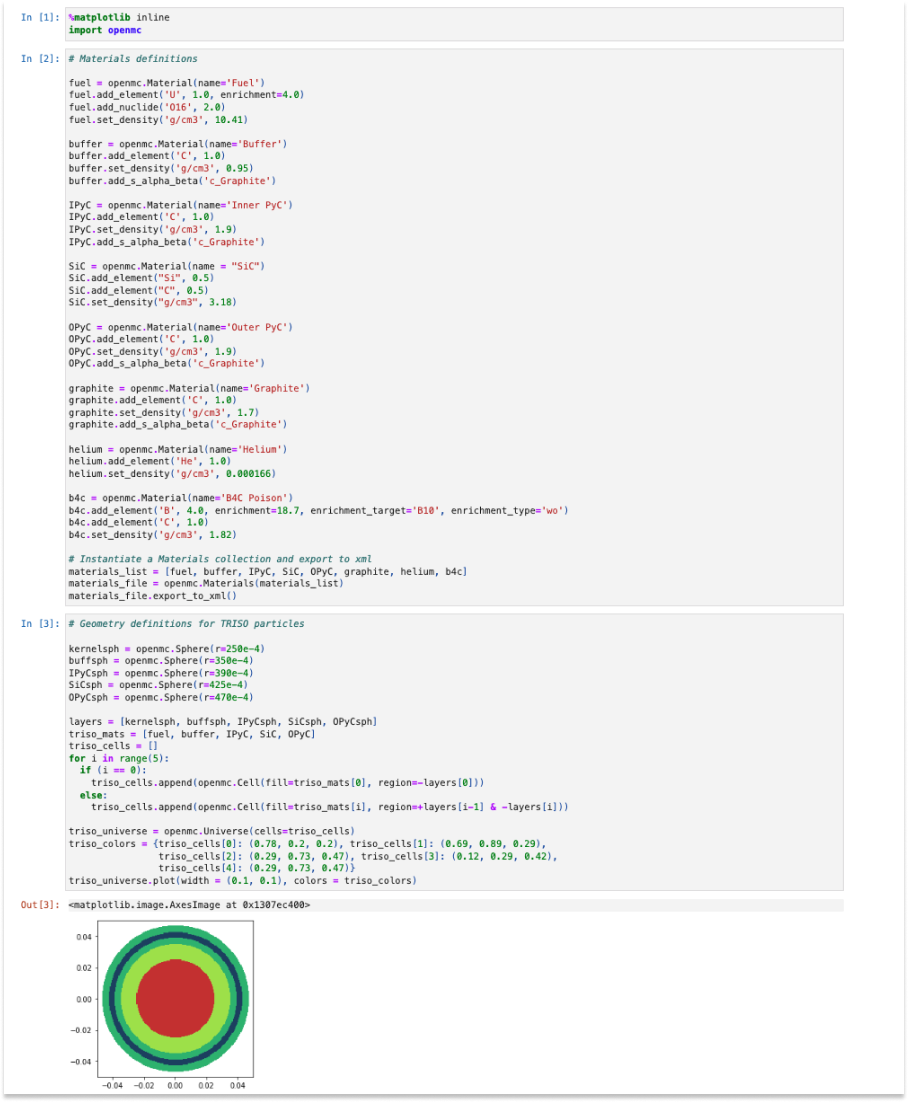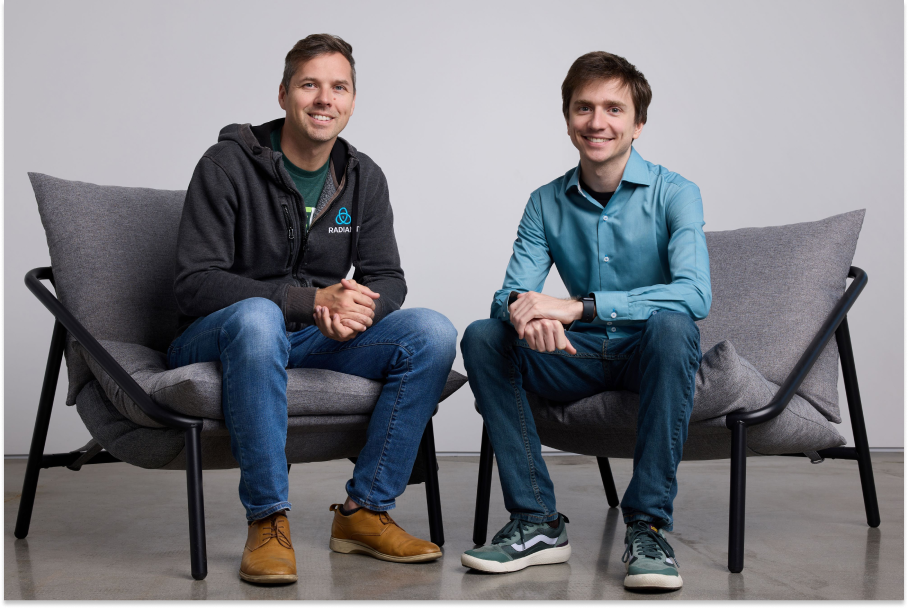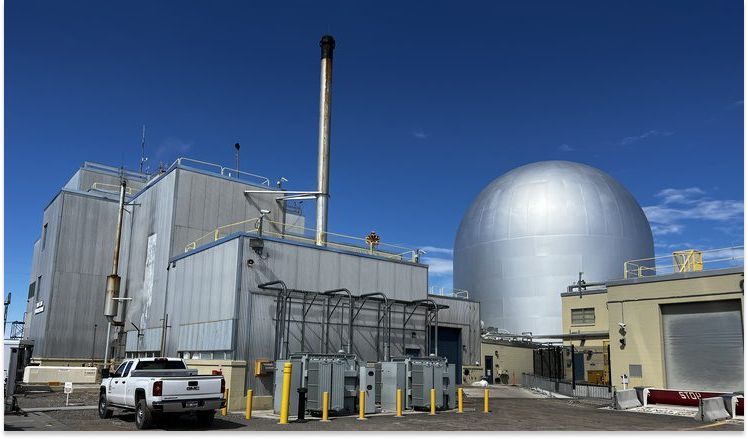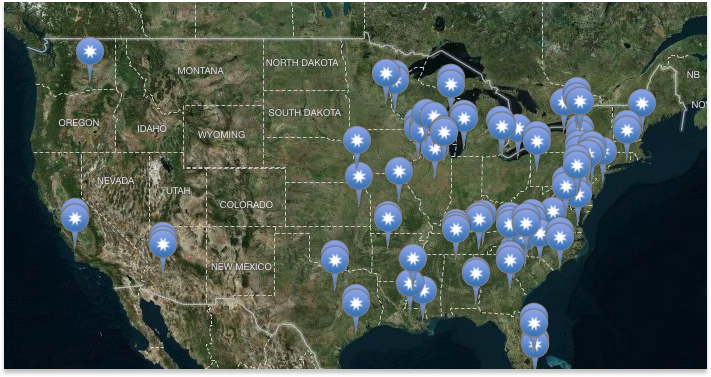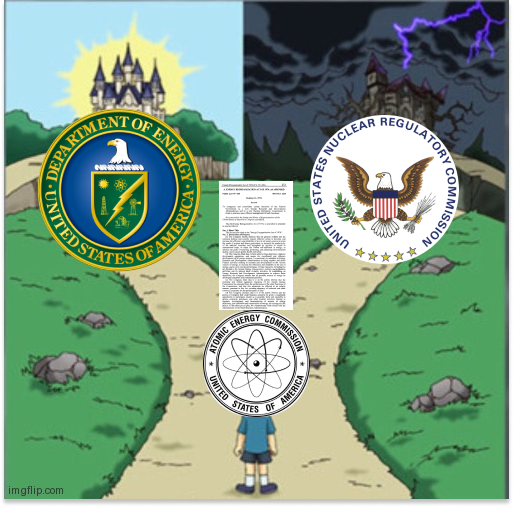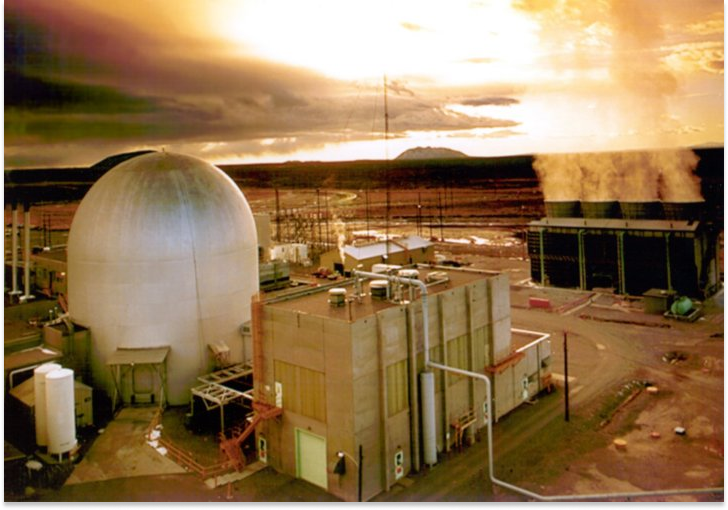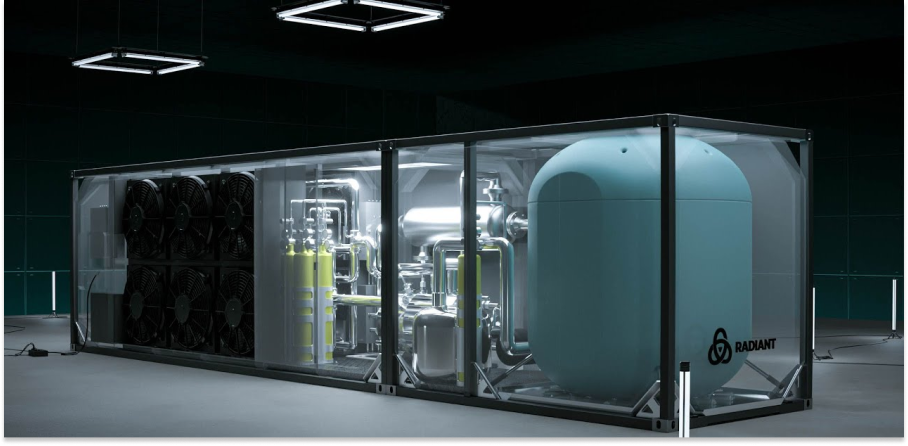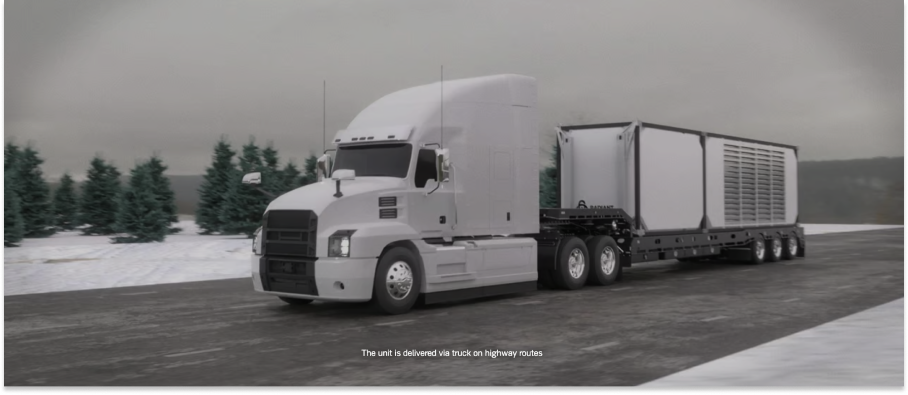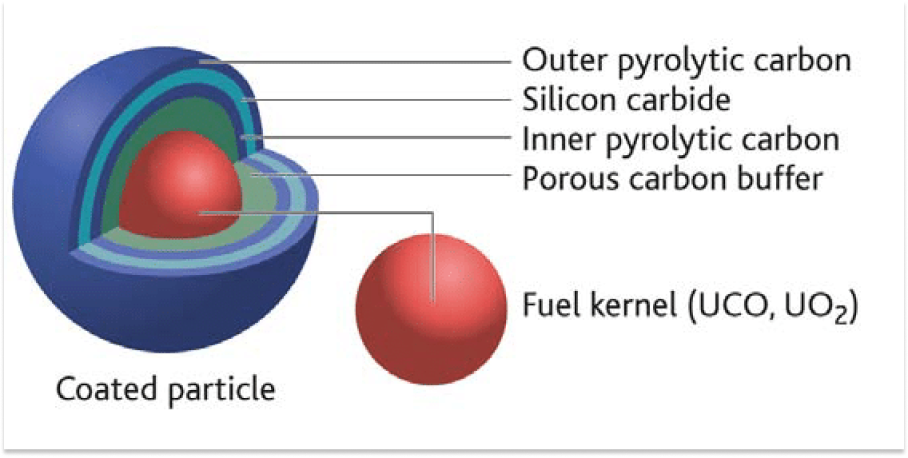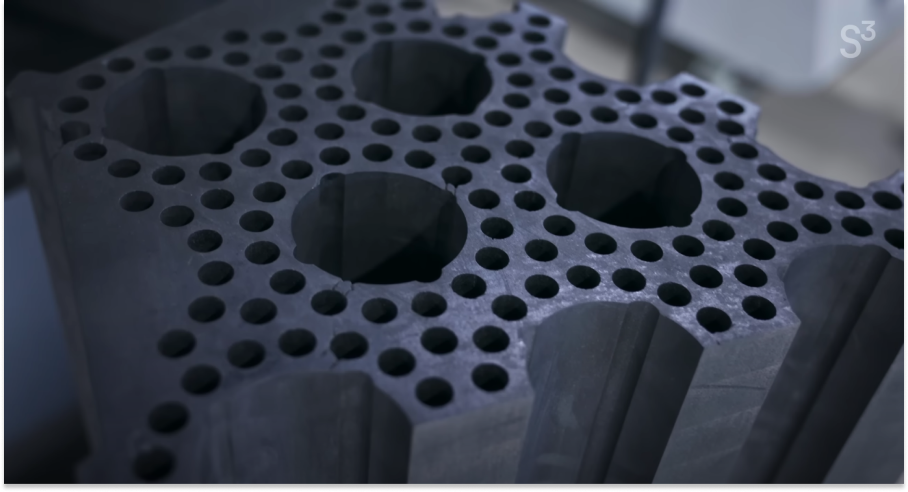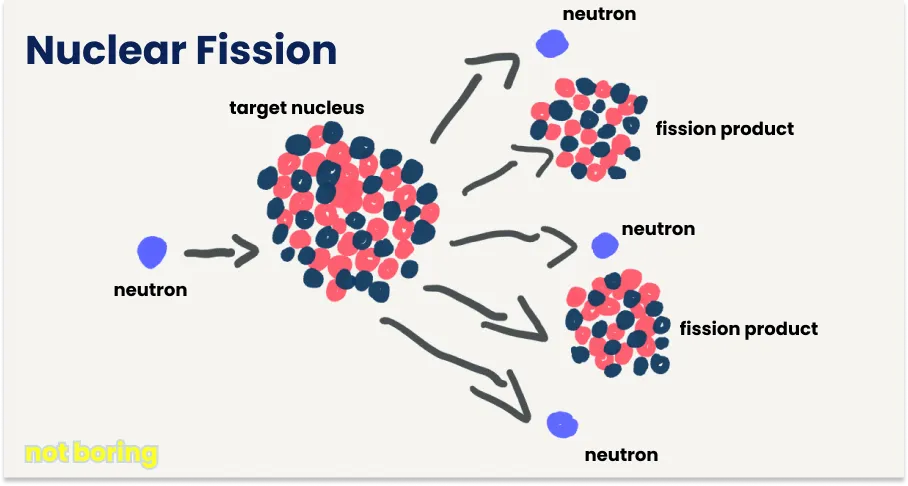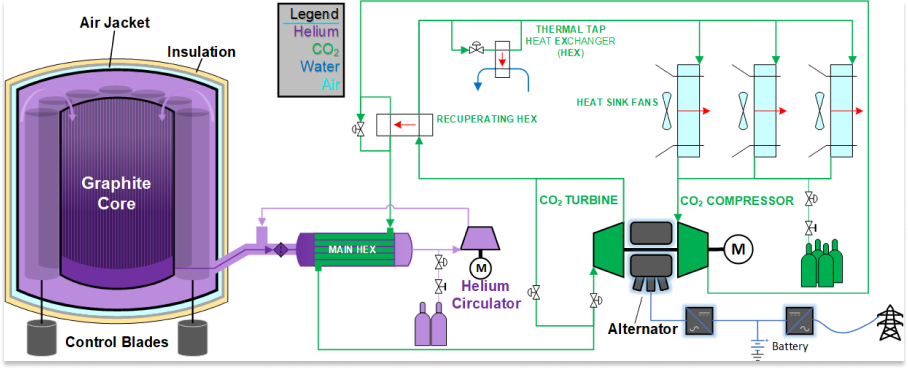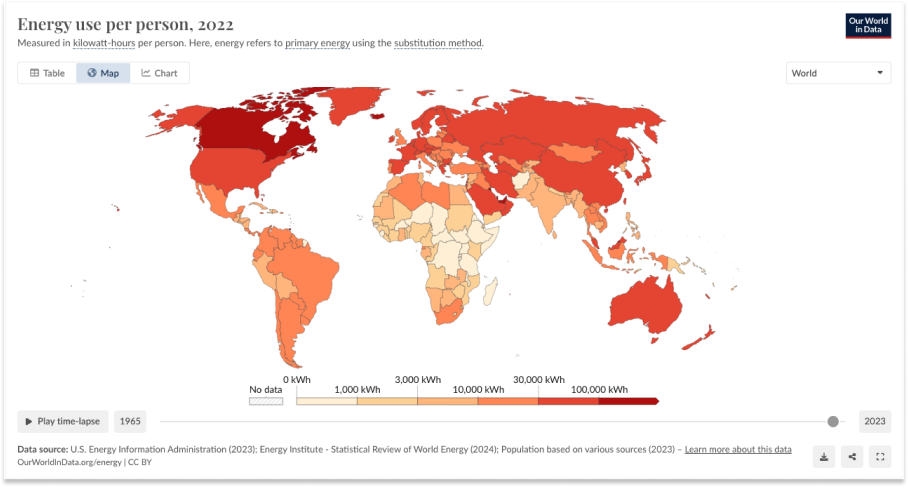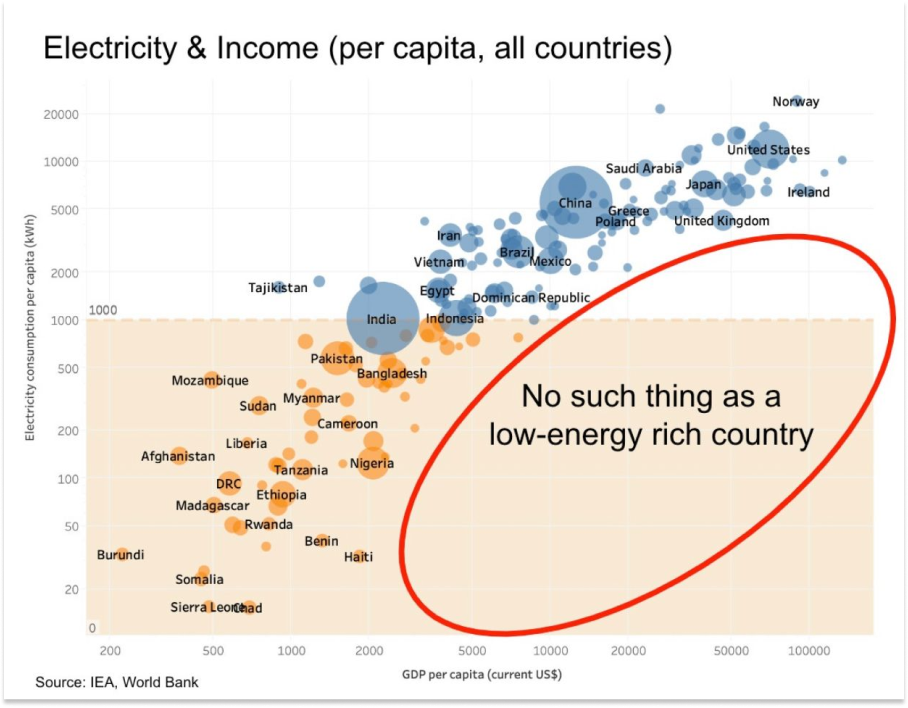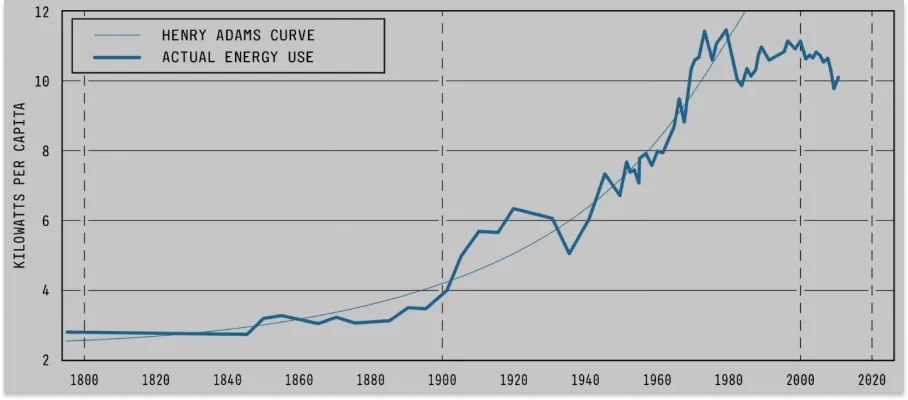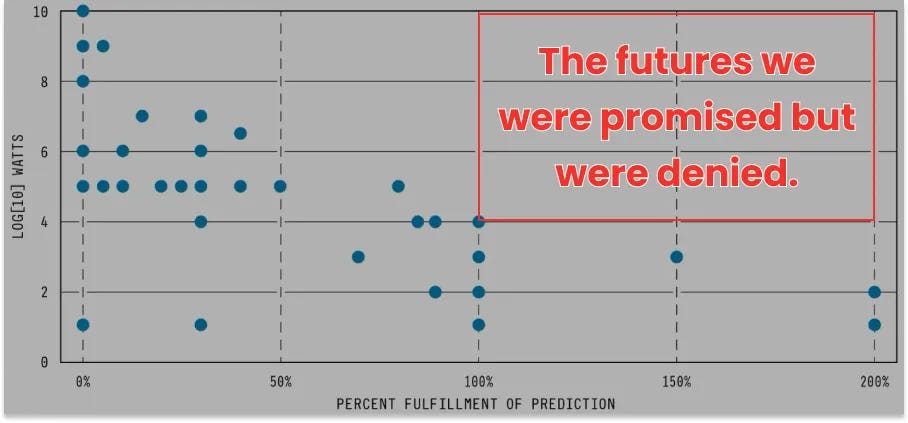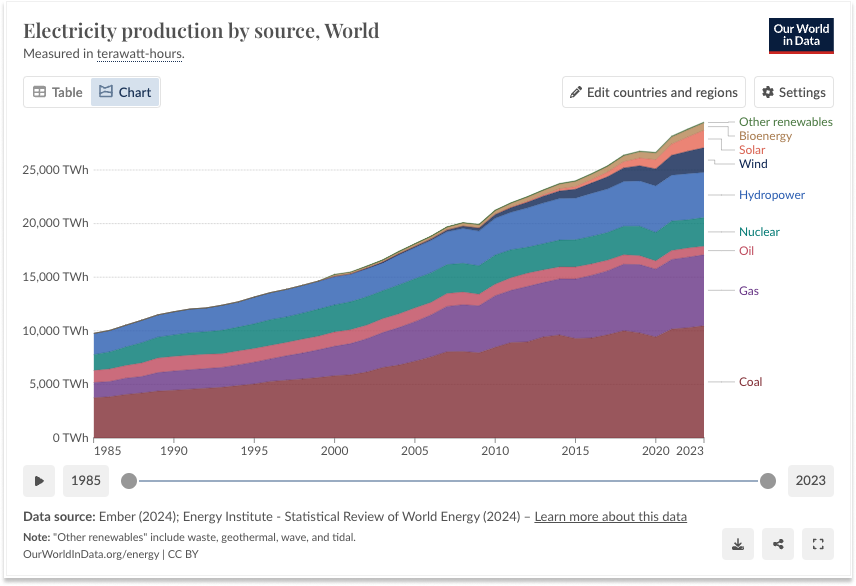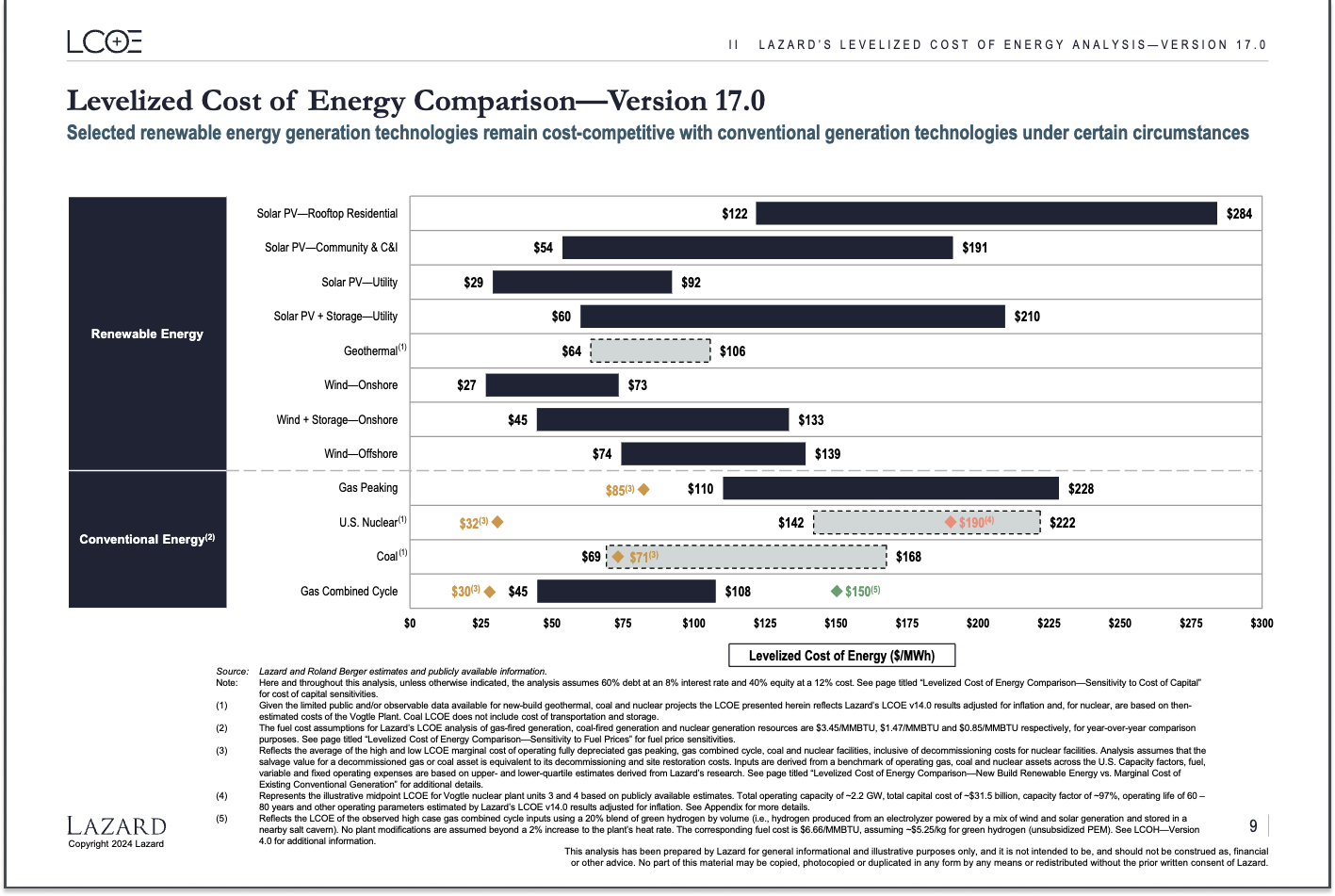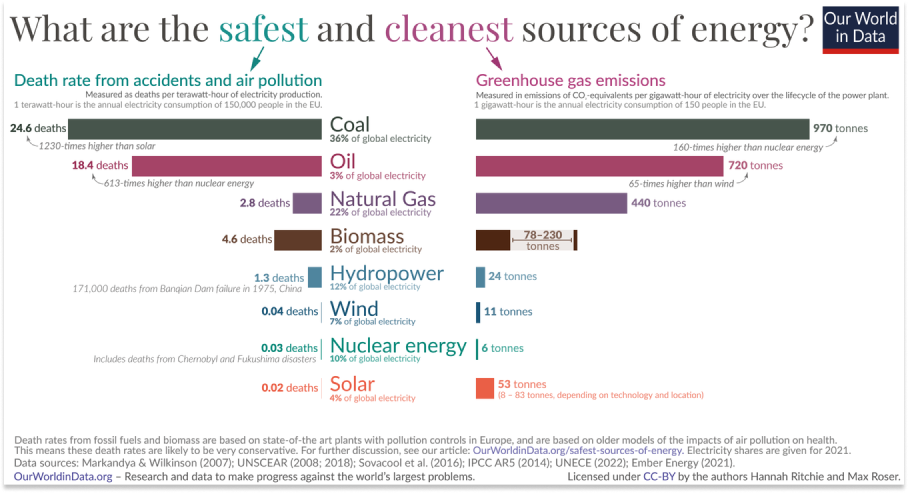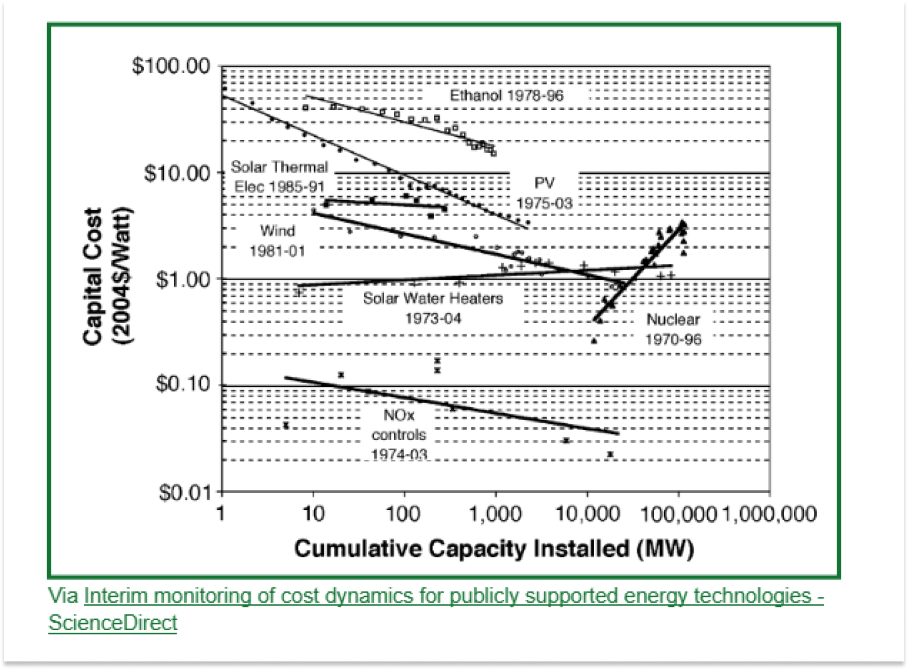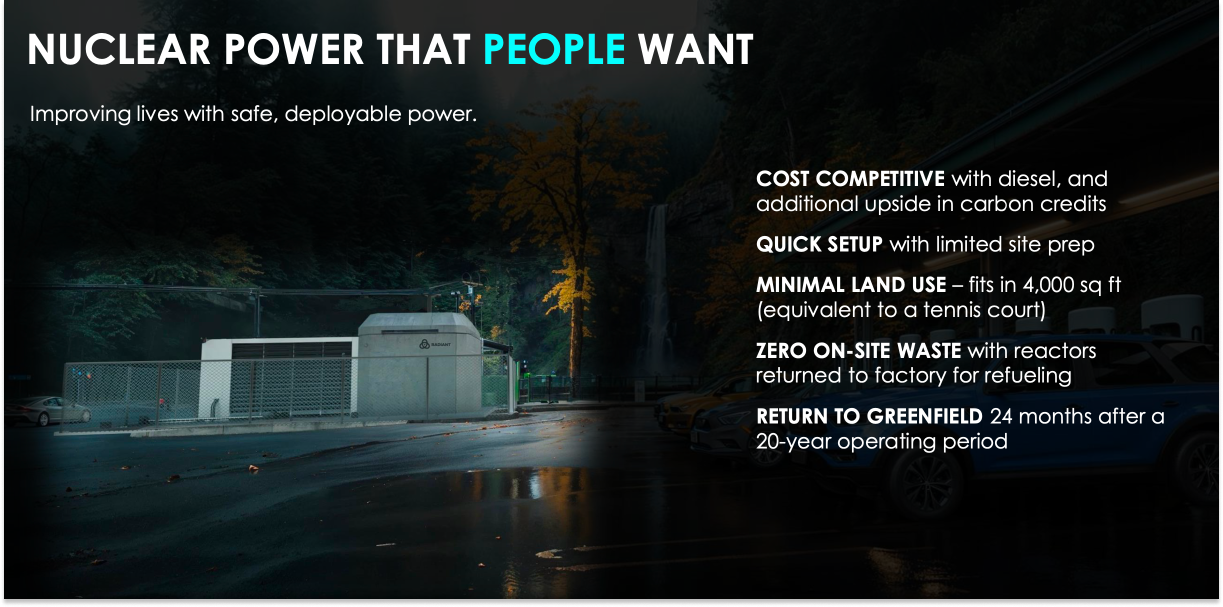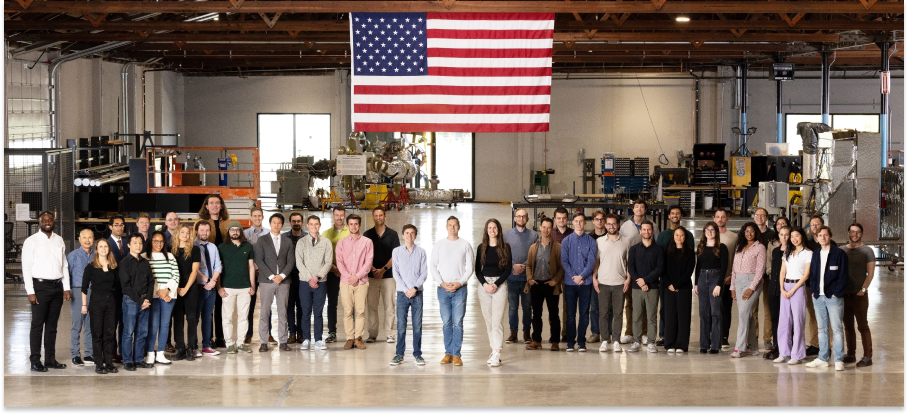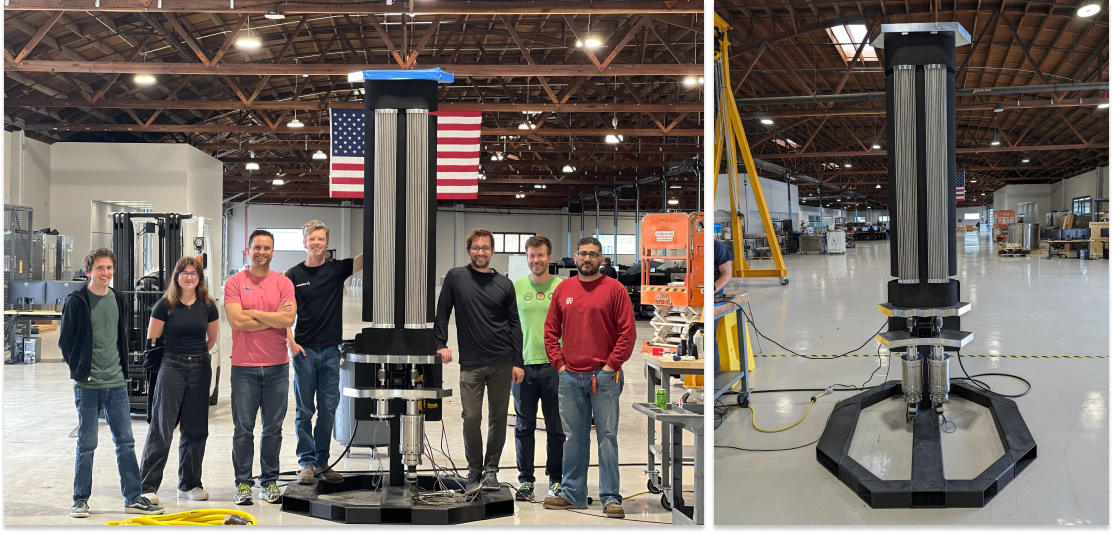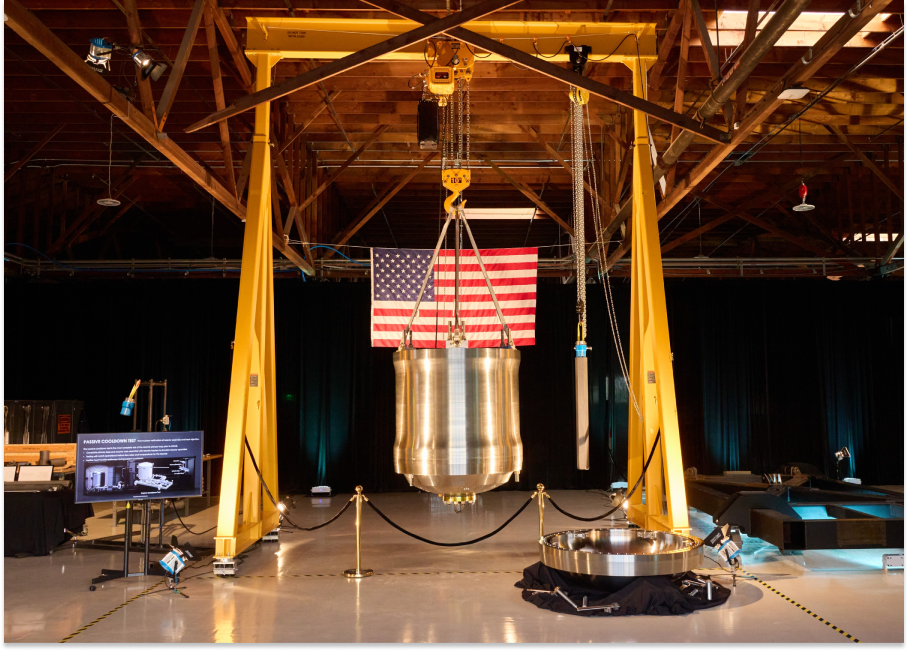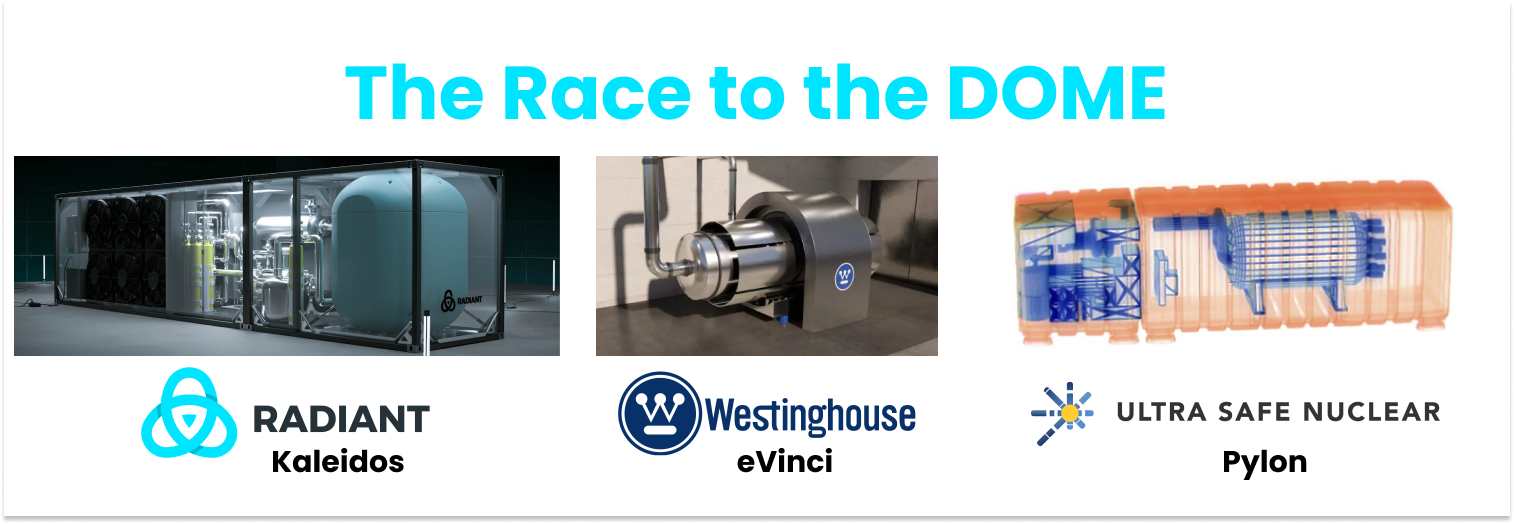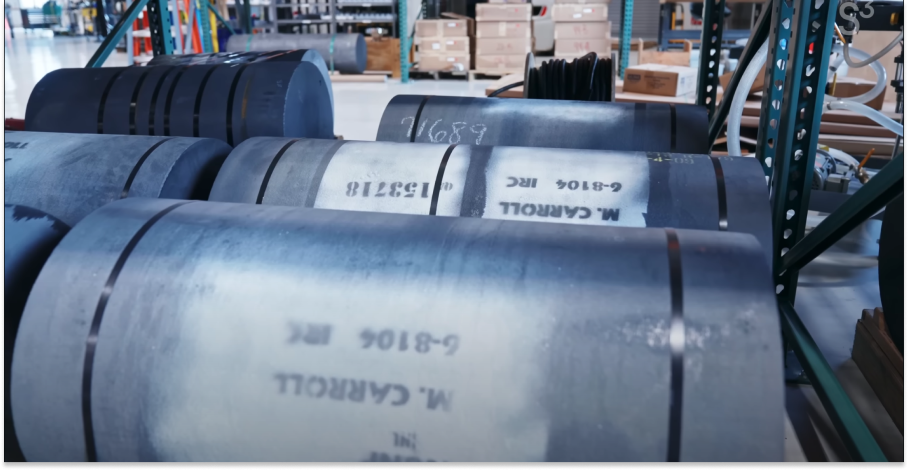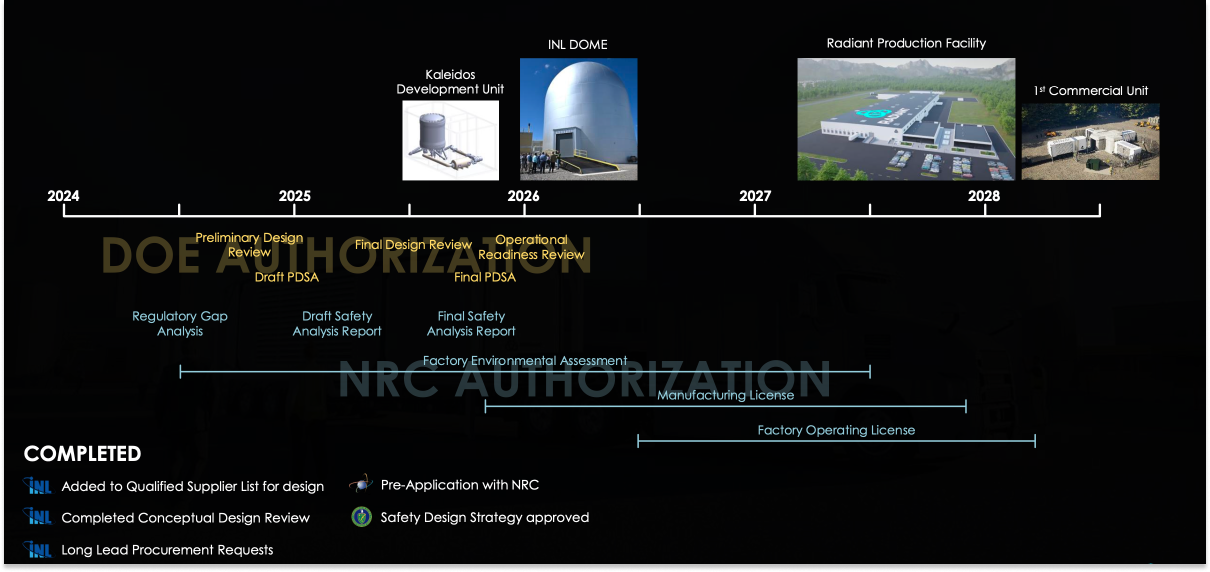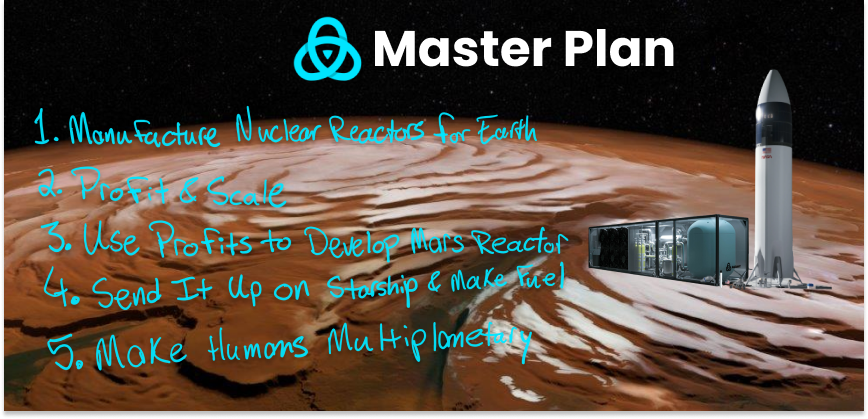Not Boring by Packy McCormick - Radiant
Welcome to the 193 newly Not Boring people who have joined us since last week! If you haven’t subscribed, join 230,390 smart, curious folks by subscribing here: Today’s Not Boring is brought to you by… Contrary If you like deep dives on great startups, then do I have the job for you! Contrary, a venture firm that has backed companies like Ramp, Anduril, and Zepto, is hiring a Research Analyst for Contrary Research to build on their efforts to create the best starting place to understand any private company. The role is fully remote with competitive salary and more. If interested, email research@contrary.com and mention Not Boring! Hi friends 👋 , Happy Tuesday! Fun week. Today’s Deep Dive is a long time coming. Last year, when Julia DeWahl and I hosted our season of Age of Miracles, we got to speak with a lot of the founders building nuclear startups. Only one founder turned us down: Radiant’s Doug Bernauer. Radiant was heads down racing to a 2026 deadline and wasn’t spending much time talking about the company publicly. Respect. Earlier this year, though, on a trip out to Los Angeles, I got to meet Doug and some of the Radiant team at their El Segundo HQ, and see a little bit of what they were building up close. That’s when Doug first told me about why he started Radiant — because Mars needs nuclear — and when I knew that I had to write about the company. Today is my daughter Maya’s 2nd birthday — happy birthday, Maya! If Radiant succeeds, she and Dev might get to celebrate a birthday on Mars one day. What a world. So this is a Deep Dive on Radiant, and on what it takes to build a nuclear reactor from scratch on Earth so that one day we can use it to power a civilization on Mars. Let’s get to it. Radiant(Click here to read the full thing online) SpaceX takes its mission “to make humanity multiplanetary” completely seriously. “When Musk launched SpaceX back in 2002, he conceived it as an endeavor to get humanity to Mars,” Walter Isaacson wrote in Elon Musk, “Every week, amid all the technical meetings on engine and rocket design, he held one otherworldly meeting called ‘Mars Colonizer.’ There he imagined what a Mars colony would look like and how it should be governed.” Elon’s former Chief of Staff, Sam Teller, recalled a 2014 SpaceX board meeting on the same theme: “They’re sitting around seriously discussing plans to build a city on Mars and what people will wear there,” Teller later marveled, “and everyone’s just acting like this is a totally normal conversation.” On the surface, it seems absurd. In 2014, the Starship rocket that might one day carry humans to the Red Planet was nine years away from its first testflight. Starlink, which would fund the journey to Mars, was still five years away. And the first successful landing of a Falcon 9 first stage, the reusability that would make the whole thing possible in the first place, wouldn’t happen for another year and a half. But here was the board, spending precious meeting time debating Martian fashion. Your first reaction might be that Elon is weird, and he is the boss, and so everyone humors him. His former assistant, Elissa Butterfield, told Isaacson, “We tried to avoid ever skipping Mars Colonizer, because that was the most fun meeting for him and put him in a good mood.” But it wasn’t just Elon. Doug Bernauer, an eleven-year SpaceX veteran, gave up a salary, stock options, and the enviable position as a senior jack-of-all-trades engineer at the world’s most ambitious company to fix an existential problem he helped uncover, simulated, solved for, and presented to Elon and the team in a Mars Colonizer meeting. Here was the problem: to colonize Mars, you need to send Starship up with supplies, then refuel it and send it back to Earth, all without humans, because untamed Mars is too risky, and the food to feed them weighs too much. But how do you refuel Starship on a planet with no fuel? It’s actually possible. You can vaporize the ice that’s all over Mars into water, run it through an Electrolyzer to split H2O into Hydrogen and Oxygen, pull CO2 from the atmosphere, then react Hydrogen and CO2 using the Sabatier reaction to produce methane. Then compress it, cool it to a liquid, fill the tanks, and keep it cool with cryo coolers. The challenge is: that takes a whole lot of power. Turns out, you would need over three football fields worth of solar panels to produce all of that power. Assuming that you could get the panels spread out on Mars’ surface, a task for which the team looked at a number of unorthodox solutions, you’d also need to send up vehicles that could anchor them into Mars’ rocky surface. All told, the mass of the panels plus all of the other machines involved in the process would require two missions. Solar was a no-go. But not powering Mars was not an option, either. What to do? In a meeting with Tom Mueller, now the CEO of Impulse Space, and Elon, Doug remembers, “Elon said the word nuclear first.” SpaceX had no nuclear division. Unlike solar, Elon didn’t have a nuclear company on the side. The company had no nuclear code, nothing on the topic except for a few studies that Mueller, already a big nuclear fan, had done. Doug didn’t know anything about nuclear, either, but he knew how to figure things out. In his time at SpaceX, he’d already worked on everything from mining locomotives to space lasers. So he raised his hand to study the problem, and in doing so, changed the trajectory of his career. Nuclear on MarsAt first blush, the idea of building nuclear reactors on Mars seems like a fantasy, and a potentially wasteful one at that. The age-old knock against the space program is that we shouldn’t be spending tens of billions of dollars sending rockets to faraway planets when we have so many issues left to solve right here on our own. The counters to that line of thinking are manifold, ranging from the aspirational to the practical. On the aspirational side, humans need a frontier, a just-out-of-reach goal to strive towards. Plus, making humanity multiplanetary is an insurance policy on the most valuable thing in the universe. More practically, the things we develop for space directly improve life on earth. GPS is the most obvious example. Without satellites, your Google Maps wouldn’t work. But the list of products you use in your daily life that were born out of or improved by space research is shockingly long: cell phone cameras, memory foam, scratch-resistant lenses, cordless tools, water filtration systems, infrared ear thermometers, joysticks, LASIK, artificial limbs, cochlear implants, insulin pumps, soft contact lenses, and baby formula, to name a few. When I finished the London Marathon in April, I was quickly wrapped in a reflective blanket of the sort first developed by NASA in 1964. And as Brian Potter highlights in his series on solar, at a time when solar PV electricity was 5x more expensive than batteries and 10,000 more expensive than electricity from utilities, satellites “would be the main customer for solar PV for the next 20 years,” kicking off the technology’s earth-altering descent down the cost curve. That such a disproportionate amount of innovation would come from space research is counterintuitive but logical. In Taste for Makers, Paul Graham wrote that difficulty can lead to good design:
Space is harder than a mountain: it is extreme, remote, resource-constrained, and unforgiving. Governments, and private companies, are willing to pay large sums of money for solutions, often with indefinite payback periods, in a sort of Pascal’s Wager: that the ultimate gains will be near-infinitely large. Researching for space gives geniuses permission to treat seemingly fantastical ideas with life-or-death seriousness, with extreme constraints that strip away any considerations except the hard facts, which is exactly what Doug did when he began studying nuclear on Mars. The first question he asked was: could nuclear achieve SpaceX’s objectives on Mars? He started reading papers and playing around in Python, comparing solar versus nuclear. Pretty soon, he realized that nuclear had a number of advantages. For one thing, you could fit everything – the nuclear reactor, the Sabatier reactor, and all supporting machines, in one Starship. Instead of needing to land at the equator, where the sun is, the Starship could land at Mars’ North Pole, where the ice is. If you landed right on the ice, you could integrate a reactor right into the rocket, use the heat it produces to melt a hole, let it freeze back up over the hoses, and end up with a giant well. This is very similar to a process that humans have undertaken in the Arctic and Antarctic for decades – a Rodriguez Well, or Rodwell. The first Rodwell, built at Camp Century in Greenland, just 800 miles from the North Pole, in 1958, actually drew its power from a nuclear reactor. In October 2020, four years after Doug had the idea, NASA actually studied the potential of using Rodwells on Mars, and concluded that it could potentially work, although more studies are needed. When Doug concluded his study, he had his answer: nuclear could achieve SpaceX’s objectives on Mars. And he had his self-assigned marching orders: “OK, after we build Starship, this is the thing to do and build,” he said, “This is the mission statement.” Remember, SpaceX people are dead serious about building a civilization on Mars. Elon takes time out of his insane schedule every week for Mars Colonizer. Doug, realizing that humans would have to farm on Mars and that he didn’t know how to farm, ripped the grass out of his family’s front yard and started planting wheat with his kids to practice. Just getting a rocket to Mars isn’t enough. To form a society up there, you need power, and more specifically, you need nuclear power. By that logic, then, figuring out how to build nuclear reactors that you can put in a Starship and send hurtling through more than 100 million miles of space, became a problem of civilizational importance, and one that Doug would be willing to spend the rest of his career solving. He remained at SpaceX for the next three years, getting smarter on nuclear, reading papers and playing with simulations at night while doing his day job during the day, waiting for the time when he and the team would hit go on their nuclear plans. Then in January 2019, the Department of Defense’s Strategic Capabilities Office (SCO) announced Project Pele and requested “the development of a safe, mobile and advanced nuclear microreactor to support a variety of Department of Defense missions, such as generating power for remote operating bases.” The DoD had very specific needs: a 1-5 MW high-temperature gas-cooled reactor (HTGR) mobile nuclear reactor that could be transported in a C17 to be set up quickly in remote locations, that used High-Assay Low-Enriched Uranium (HALEU) fuel in damage-resistant TRISO (TRIstructural-ISOtropic) fuel particles, which could be run for several years without refueling and use passive safety systems that can shut down safely on their own. Project Pele was a loud, clanging siren for Doug. He knew that the DoD must have put out the request with a supplier in mind – the Defense Science Board reviewed many companies three years prior to creating the program to ensure its specs were reasonable and that the RFP would generate sufficient replies – but he thought that SpaceX should compete anyway. Nuclear was too important to the plan, and no new reactors had been built in such a long time. Having the DoD behind the project could change that. It could solve all of nuclear’s challenges – funding, customer, and regulatory – within one entity, which meant that the time was right for some company to be the company that built a new reactor. He thought that company should be SpaceX, and tried to set up a nuclear team within the friendly confines of the space giant. Meanwhile, since the DoD had requested proposals, he went on sabbatical to temporarily go full-time on the project, pulling together an informal crack team that included Firmware Engineer Bob Urberger, to submit one. The team came up with a name – Radiant – and a logo, and even set up a legal entity through which they submitted the proposal. The team didn’t win the proposal, nor did Doug win his attempt to set up a nuclear team within SpaceX. It was just too hard for a big company that had so many other complex things going on. That was fine. The proposal had confirmed to him that he couldn’t work on anything but solving this problem, so in 2019, Doug left SpaceX to found Radiant. Simulating RadiantNow that hard tech is undergoing a SpaceX-driven renaissance, there’s a belief that a founder can simply leave SpaceX, raise his or her hand, and receive millions of venture dollars to build the SpaceX for X. That was not Doug’s experience founding Radiant. When he hung up his shingle, Doug’s sum total of experience with nuclear power was that one project. He understood the rough shape of what he would need to build – something close to Project Pele’s requirements – but he didn’t know what the reactor design would be, how to design a reactor, or anyone who knew how to design a reactor. He set out to remedy those issues in reverse order. First, he started reaching out to people in the nuclear industry on LinkedIn, and was met with a surprisingly positive reception. This is something I’ve heard from a number of nuclear founders – industry veterans are extremely welcoming to fresh talent. One of the suggestions he heard over and over again in those conversations was to go to the annual American Nuclear Society event to meet more people, so Doug, Bob, and a few others went at the end of 2019. They met more people, including Jess Gehin, the Associate Laboratory Director, Nuclear Science & Technology, at Idaho National Lab (INL). In early 2020, on Gehin’s invitation, Doug visited INL, where he walked on top of reactors talking about different technology types. “I fiendishly learned everything I could about fuel, densities, costs,” he said, all information that he would bring into figuring out how to design a reactor. Second, he set out to learn reactor design through simulations. He’d figured out how to do the necessary modeling work for the proposal he submitted while at SpaceX (via Radiant Industries), but by his own admission, what they submitted was “really a Frankenstein, not a good design from an expert.” So he turned himself into an expert. Then, early in Radiant’s life, before the company had raised any money, COVID hit. Like many of us, Doug spent much of his lockdown glued to his computer. Unlike many of us, Doug was using his computer to model nuclear reactors. Taking what he’d learned from conversations, questions, and papers, Doug started running simulations in code, first using a program called Serpent, “a multi-purpose three-dimensional continuous-energy neutron and photon transport code, developed at VTT Technical Research Centre of Finland since 2004,” and then a more modern one called OpenMC. This is what some OpenMC code looks like for a Very High Temperature Reactor (VHTR): In OpenMC, you can adjust a number of different parameters, like fuel enrichment or coolant channel sizes, and the Monte Carlo code simulates a number of particles by making neutrons, picking a random direction for them to head, and rolling the dice on their starting energies. It outputs metrics that tell you how the simulated reactor performs, like k-effective. K-effective is the ratio of the number of neutrons in one generation to the number of neutrons in the previous generation in a nuclear fission chain reaction. As Doug explained, “If you get 2.4 neutrons from every fission reaction, and lose 1.4 neutrons, and 1 gets back to fission, that’s critical.” Meaning, each reaction produces a certain number of neutrons. Some are lost to any number of factors, like absorption in non-fissile materials, leakage from the reactor core, parasitic capture in U-238 (you want it to hit the U-235 isotope, not U-238), or absorption in control rods). If just one neutron survives to set off fission in the next U-235 atom, and so on, then the reaction can sustain and produce power. There are dozens of parameters and dozens of output metrics in OpenMC, and in an actual nuclear reactor. Change one parameter, and all of the outputs change. It’s a multivariate problem with no right answer; it depends what you’re solving for. In Doug’s case, he was solving for a reactor that roughly hit Project Pele’s request, but even within that limited design space, there are practically limitless permutations. Luckily, Doug had a lot of time. He ran hundreds and hundreds of simulations, first to get a feel for how different decisions influenced the output, the way you or I might play with a model’s sensitivity to different inputs in Excel in order to understand a business. He’d share each new batch of runs with his new friends at INL and a particularly helpful professor at UC Berkeley. That professor, he said, enjoyed seeing the frenzied attempts of a novice but SpaceX-credentialed outsider. Once Doug got far enough down the rabbit hole on a certain design, tracking metrics and responsiveness to tweaks the whole time, he’d throw it all away and start fresh. “I didn’t know what the hell I was doing,” he smiled, but with each fresh model, he knew a little bit more. Third and finally, Doug got to a reactor design he liked: a 1 MW High-Temperature Gas-Cooled Reactor that uses a hydride moderator inside of a graphite core to lower fuel requirements. Typically, fuel costs aren’t a huge consideration in nuclear reactors. For a 1 GW reactor, like the Westinghouse AP 1000, nuclear fuel makes up something like 5-7% of the total cost of operating the reactor, unlike something like an oil or gas plant, in which fuel is by far the biggest cost because you need to keep feeding it in to produce electricity. But for Radiant’s smaller reactor, 0.1% the size of a utility-scale reactor, fuel is a huge percentage of the overall cost, as high as 40-60%. This is where the nuclear modeling bleeds into financial modeling. With a rough outline of the reactor design, Doug began to dig into the economics. Costs for various inputs to a nuclear reactor, like fuel, were actually harder to find than Doug expected. Luckily, there are contracts through federally funded programs that are mandated to be publicly available, so he’d get one number, and even if it was hard to corroborate, he’d go with it for the time being. As Doug learned at SpaceX, iteration speed is everything. The perfect is the enemy of the good. “Take it, look at it, run with it. Don’t wait, ever.” He didn’t. While working on the reactor design, he was talking to manufacturers about the helium pumps they’d need to cool it. He lined up partners with nuclear-grade experience. He kept meeting people. Hired Armand Eliassen, a longtime Naval Reactors engineer. Bob Urberger joined the team full-time as a co-founder. They hadn’t raised any money yet, but Doug and Bob put in some of their own to say, “This is now a thing.” Then in late 2020, the DOE announced its Advanced Reactor Demonstration Program (ARDP), initially with $160 million from the DOE, and then with another $2.5 billion funded by the Infrastructure bill, to back up to ten projects. The program would award grants in three pathways:
The first pathway funded two existing companies – Bill Gates’ TerraPower and X-Energy – to support “design, licensing, construction, and operation” of those companies’ first reactors. The other two pathways, however, were wide open. Five or six companies had tried and failed. This was Radiant’s first big shot. Demonstrating Reactors on EarthI realize I haven’t stated this explicitly yet, so for the avoidance of doubt: while Doug’s plan was to develop nuclear reactors for use on Mars, Radiant was created to start by designing nuclear reactors that work on Earth, reactors that could attract capital and make money on earth. Even SpaceX, with the world’s best rockets and well-laid plans for Martian dominion, funds those things by selling telecommunications services to terrestrial customers. And to make a nuclear reactor that makes money on earth takes money, which the DOE was offering. So Doug, Bob, and Armand got to work on putting together their proposal. “We had a month or two to put the whole thing together,” Doug remembered. “It was a forcing function.” The proposal required a design and cost estimates for the reactor, which the team had already been working on, but it also required a funding schedule: how much money would the team need, and when, to build its reactor. More specifically: how much would it take to get to the DOME in 2026 with a fueled reactor test? Remember this. Four years ago, the Radiant team committed to having a reactor ready to fuel up and test at the National Reactor Innovation Center’s Demonstration of Microreactor Experiments (NRIC-DOME) test bed at Idaho National Laboratory by 2026. Hold onto that thought. More urgently, the team calculated that it would only need $2.8 million to fund its development in the first year, which the DOE ARDP could cover, if they won. They’d need money in the interim, though, so for the first time, Radiant went out to raise money. Again, in 2024, that would be easy. That would be the tiniest round an ex-SpaceX founder building in nuclear could convince an investor to shrink down to. In 2020, though, it was another story. Radiant raised $700k from angels, and Doug pitched VCs on the story that this DOE program was coming, and that they thought they could win it. VCs replied: “Cool, we will put such and such a check in when you win it.” Doug had to sell more SpaceX stock to fund the company while it submitted, and then awaited the results of, its proposal. So they submitted. And then they waited, and waited, and waited, for three or four months, until one morning, Doug said, “I woke up, looked at my phone all foggy-eyed, saw the email, and it was like, ‘Nah.’” Radiant did not win the award, or the money that came with it, or the money that VCs promised to wire the company once they won it. “Everything they wrote in the rejection was true,” Doug told me. “But it was just the negative aspects, none of the positives. ‘You have no past performance record,’ ‘you haven’t worked in nuclear.’ It’s silly stuff when you look at it now, totally true but the totally wrong way to look at it.” Ultimately, though, the company was able to raise the money it needed on SAFEs from three investors – Acequia Capital, Also Capital, and Boost VC. And more importantly, they had a design, a budget, a goal, and a plan to get there: DOME in 2026 or bust.
Why the DOME MattersTo understand why the DOME is so important to Radiant, you need to understand a little bit about the history of nuclear energy in America and the Nuclear Regulatory Commission’s (NRC) chicken-and-egg approach to regulation. Back in the first Atomic Age, after the US dropped nuclear bombs on Japan, there was tremendous excitement around using that same newfound capability that humans had gained, the ability to release huge amounts of energy by splitting atoms, for good. In 1953, President Eisenhower addressed the United Nations General Assembly to deliver what would come to be known as the “Atoms for Peace” speech.  President Eisenhower imagined that, “if the entire body of the world's scientists and engineers had adequate amounts of fissionable material with which to test and develop their ideas, this capability would rapidly be transformed into universal, efficient, and economic usage.” They did, and it was. On Age of Miracles, nuclear engineer and author of the excellent whatisnuclear.com Nick Touran told me and Julia DeWahl that the period was a time of incredible experimentation in nuclear power:
People were experimenting with all sorts of nuclear reactor designs, using various moderators, coolants, vessels, and sizes. There were Light Water Reactors, both Pressurized and Boiling, Heavy Water Reactors, Gas-Cooled Reactors, Liquid Metal Fast Breeder Reactors, Molten Salt Reactors, Organic-cooled Reactors, Homogeneous Reactors, and Graphite-Moderated Reactors, among others. As Nick pointed out, a lot of the reactor designs startups are excited about today were first tested way back in the ‘50s and ‘60s (many such cases in hard tech). If the phrases “nuclear reactor” and “experimentation” sound odd together, well, it was a different time. Back then, nuclear reactors were governed by the Atomic Energy Commission (AEC), which was tasked with both regulating and promoting/developing nuclear technology. The AEC of course cared about safety, but it didn’t care only about safety. It believed that nuclear power was a force for good and regulated it as such. Then a couple of things happened, one market-driven and one-government driven. On the market side, the US Navy, under Admiral Hyman G. Rickover, decided to use Pressurized Water Reactors (PWRs), built by Westinghouse, to power nuclear submarines. Westinghouse used this experience to create commercial PWR designs, and as more utilities embraced nuclear, and engineers realized the economies of scale present in larger reactors, the US nuclear industry essentially just made bigger and bigger PWRs. If you’re picturing a nuclear plant in your head right now, with the hourglass-ish cooling tower, you’re probably picturing a PWR. Sixty-three of the ninety-four active nuclear reactors in the US today are PWRs, and the other thirty-one are the similar Boiling Water Reactors (BWRs).
This explains why the US coalesced around Light Water Reactors back then, but none of it explains why the DOME is so important to Radiant today. That’s the government-driven piece. In 1974, Congress passed the Energy Reorganization Act of 1974, which split the AEC’s responsibilities into two organizations:
At the same time, the DoD’s nuclear programs – including the Naval Nuclear Propulsion Program – were separated from the civilian agencies, meaning that money spent on the defense side wouldn’t fund the peaceful use of nuclear energy, practically the polar opposite of Eisenhower’s vision of Atoms for Peace. That decision, although it may not have been the intention at the time, set the nuclear industry in amber as it existed in 1974. In the 50 years since the NRC took over, it has never certified an advanced nuclear reactor (non-water cooled) design. The NRC has also not licensed the construction of any new reactor design, including LWRs. Despite the fact that we need clean energy. Despite the fact that many of the new designs are safer than water-cooled designs! That’s an embarrassment, full stop. Peeking inside of the embarrassment, part of the problem is the NRC’s chicken-and-egg approach to regulation that I mentioned earlier: the NRC wants to see data proving that a particular reactor design is safe, but it won’t allow companies to test their reactors in order to generate that data! That’s so maddening to even type that it’s a small miracle any entrepreneur is willing to build a nuclear startup. But entrepreneurs are clever and resilient, and many are taking novel approaches to getting around the NRC’s roadblocks. And one path around the roadblocks is to test a reactor in one of the DOE’s national labs, like, for example, Idaho National Lab. Contra the NRC, the DOE is awesome. It’s quite literally the good half of the AEC. I talked about some of the great work it does on things like fusion and nuclear safety in my deep dive on Fuse Energy, and it also provides loans and grants to fund the development of new energy technologies, and provides facilities to test advanced reactor designs. Like the DOME. The “DOME” at INL, officially known as the Contained Test Facility, was built to house the Experimental Breeder Reactor II (EBR-II), a breeder reactor power plant built and operated by Argonne National Laboratory back in the AEC-overseen good ol’ days 1964. EBR-II was shut down in 1994, and the decades-long decommissioning process began. In the 2010s, there were plans to take down the large concrete dome from which the facility takes its nickname. Contractors actually cut a giant vertical slit in the dome (lowercase, the actual structure) to begin the process. The DOME was on its way out until, miraculously, passionate leadership at INL’s Materials and Fuels Complex got those plans changed in 2018. Now, INL is preparing the dome to serve as a test facility for advanced reactors. The refurbished Demonstration of Microreactor Experiments (DOME) test bed is set to open in 2026. Hence Doug’s original plan to test at the DOME in 2026. Hence the race to the DOME. Here’s the logic more succinctly. Currently, there’s nowhere to test an advanced nuclear reactor design, hence there’s no way to generate the data the NRC needs to see to approve a design, hence there’s no way to get a new design approved. When the DOME begins operations, hopefully in 2026, it will be that place, the facility at which nuclear startups may be able to resolve the NRC’s chicken-and-egg paradox. Whichever company can test in the DOME first has a timing advantage: it can get the data, get NRC approval, and roll out commercial reactors before anyone else. Here’s Radiant’s logic. If humanity is to be multiplanetary, we need nuclear reactors on Mars. To make nuclear reactors for Mars, you need to make a nuclear reactor that works on earth. To make a nuclear reactor that works on earth, you need money. To make money, you need to mass produce nuclear reactors on earth and sell power from those nuclear reactors to customers who need it at a price they can afford. To do that, you need approval to make nuclear reactors. To do that, you need data. To do that, you need to test in the DOME. Because the reactor design Radiant is pursuing is not water-cooled, and nothing like it has ever been approved by the NRC before. Meet KaleidosNow is as good a time as any to tell you more about the reactor that Radiant is building. They call it Kaleidos. If you want to skip this section, you can. We’ll cover what the reactor design enables in a little bit. As a little teaser, check out Radiant’s website. When I talked to Union Square Ventures’ Fred Wilson, an early Radiant investor, he said, “Make sure to point people to their website.” But I think one of the most important things to understand about Techno-Industrials is how the technology and business model fit together, so if you’re willing to dig in with me, I promise you’ll at least learn a little bit about how nuclear reactors work and the trade-offs that nuclear companies need to make. On y va. Recall that Doug and the Radiant team wanted to design their reactor to meet Project Pele’s requirements: “a safe, mobile and advanced nuclear microreactor,” and more specifically, a 1-5 MW high-temperature gas-cooled (HTGR) mobile nuclear reactor that could be transported in a C17 to be set up quickly in remote locations, that used High-Assay Low-Enriched Uranium HALEU fuel in TRISO fuel particles, which could be run for several years without refueling and use passive safety systems that can shut down safely on their own. That’s what they’ve done. I’ll break it down piece by piece, but I also highly suggest watching the episode that Jason Carman did on Radiant for S3, and I’ve linked to the part where they talk about how the reactor works: 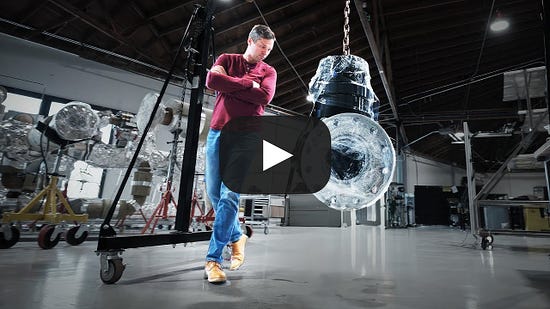 Or watching this in-depth four minute video on Kaleidos: 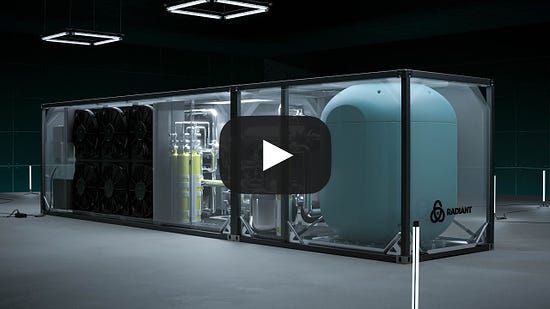 For the text version, we’ll go over the three main variables: size, fuel, and coolant. SizeTo start, Kaleidos is much smaller than the nuclear reactors you’re thinking about. Those are typically 1 gigawatt (GW), enough to power roughly one million homes. Kaleidos is 1 megawatt (MW), enough to power roughly one thousand homes. That, as Doug points out, is a practically entirely different product, three orders of magnitude (OOMs) smaller than a standard reactor. Typically, reactors are broken out by OOM:
Kaleidos is an OOM smaller than that, at just 1 MW. “Three OOMs is like taking a plane that fits 200 people and a remote controlled plane,” Doug pointed out, “and regulating them the same way.” But that’s how they’re regulated. Thanks, NRC. (This is hopefully changing with the passage of the ADVANCE Act and the NRC’s Part 53 regulation, which is being developed to create a specific regulatory framework for advanced nuclear reactors.) You’ve got to play the game on the field. Being small means that Kaleidos can fit in a plane or on the back of a truck to be shipped to remote locations that desperately need clean, consistent power. It also implies a number of design choices and trade-offs. FuelFor one thing, a smaller reactor means that fuel becomes a large percentage of the overall cost of the system, as high as 40-60% versus 5-7% in a gigawatt-scale reactor. Aside from the cost, the HALEU fuel in TRISO pellets that Radiant plans to use is hard to come by. Fuel is probably the biggest supply chain risk to any nuclear startup. On the fuel itself, Radiant will use High-Assay Low-Enrichment Uranium fuel at the high-end of the “low-enrichment” range with an enrichment level of almost 20% uranium-235 (the rest is mainly uranium-238, which is not fissile). That choice ties into the Pele specs, but it also aligns with Radiant’s business model. Higher enrichment allows for more efficient fuel use because with more U-235 atoms present, there's a higher probability of neutrons causing fission rather than being absorbed by U-238 or other materials. Remember, you need one neutron to make it to the next U-235 atom to go critical. HALEU can also achieve higher burnup rates – the amount of energy extracted from the fuel – before required refueling. This is particularly important given the fact that Kaleidos will operate in remote environments where a longer time between refuelings has a dramatic impact on unit economics. Radiant’s reactors will go five years between refuelings. The HALEU fuel will be encapsulated in TRISO pellets, which the DOE calls The Most Robust Nuclear Fuel on Earth. TRISO fuel is meltdown-proof and can handle temperatures up to 1,600°C. Radiant’s reactor will have about 100 million of these poppy seed-sized particles. As mentioned earlier, though, that 100 million number is lower than it could have been, because Radiant designed the core with both a more traditional graphite moderator plus a hydride moderator. Radiant makes its core out of graphite, as seen in the image above. The image of the core is from an old design; you can see some small defects, which they’ve learned from and corrected in current versions. The current design is made up of 37 sections, which Radiant calls “monoliths,” which are narrower than the wedge shown above. In both new and old designs, those smaller holes are where it puts the TRISO fuel pellets. The bigger holes are coolant channels – helium flows through them to pick up heat – but Radiant also puts hydrides in there. I’ll explain why. We talked about fission reactions earlier. Neutrons hit the heavy U-235 atoms in the fuel, causing them to split and release both energy, in the form of heat, and more neutrons, which continue the chain reaction. These neutrons zoom around at high speeds. The higher the speed, the less likely they are to produce another fission reaction. The role of moderators is to slow the neutrons down and increase the probability of more fission reactions. The physics are way more complicated than this – and over my head – but roughly, the better the moderation, the less fuel you need, since moderators increase the likelihood of fission reactions. Light water reactors, like all of the gigawatt-scale reactors in the United States, use good old H2O as both their moderator and their coolant, which has advantages in terms of simplicity, efficiency, and safety. Some advanced, or “Gen IV,” reactors don’t use moderators at all – these “Fast Reactors” keep neutrons fast and trade lower fission of U-235 for the fact that high-energy (fast) neutrons can actually cause fission in U-238. Many of the reactors that use slowed-down (thermal) neutrons, like Radiant, use graphite as the moderator that slows them down. Hydrides – like YH1.7 and ZrH1.6 – have higher hydrogen densities than graphite, which makes them very effective moderators. Doug’s early insight was that by also using hydrides as moderators, they could use less fuel by increasing the probability of fission reactions more than with graphite alone. There is no free lunch. Hydrides are more expensive than graphite and require more careful engineering. In a larger reactor, where fuel cost and supply is less of a concern, hydrides might not make sense. And even Radiant isn’t using a fully hydride core; it’s mainly graphite. But given the reactor size, Doug realized that using some hydrides as moderators would bring down the overall cost of the system. OK, let’s zoom back out. All of that – the HALEU TRISO fuel, the moderators, the fission reactions – the point of all of that is to produce heat, which can be converted to electricity (and potentially used to heat water). How that heat is transformed into electricity comes down to the coolant. CoolantPer the requirement, Kaleidos is not a light water reactor, but a high-temperature gas-cooled reactor. In this case, the gas is helium. Helium serves as the coolant. Here’s how it works:
With me? Good. Helium has some unique attributes that make it potentially safer than the water used in light water reactors, chief among them that helium doesn’t become radioactive as it’s bombarded with neutrons from the nuclear reaction. Helium-4, the most common isotope and the one Radiant uses, is supremely tight and stable: it’s just two protons and two neutrons. That gives it an extremely low neutron capture cross-section, meaning that when neutrons hit the helium atoms, they’re much more likely to scatter than to be absorbed. All of that to say, if, on the off chance, a Kaleidos suffers an incident and releases its coolant into the atmosphere, it would just harmlessly float away. There would be no radioactive fallout. That’s important for any reactor, but it’s particularly important for smaller reactors that will be located in remote locations across the globe. The combination of a helium primary coolant and supercritical CO2 power generation loop keeps Kaleidos safe in accident scenarios while also efficiently converting heat to electricity. Doug told me that Radiant’s current design currently achieves “30% average thermal to electric conversion.” Large nuclear reactors typically have about 33-37% efficiency, so 30% is very good for a much smaller system. That said, Doug mentioned that they could potentially increase it to 42% with design improvements in later generations, and that their approach has a 49% efficiency ceiling at Kaleidos’ scale. As with anything in reactor design, getting there would come with trade-offs, and the Radiant team will continue to look at those trade-offs as they evolve. So there you have it. Kaleidos is a 1 MW reactor that uses HALEU TRISO fuel, graphite and hydride moderators, helium coolant, and a Brayton cycle involving sCO2 in order to deliver a compact, mobile, efficient, and affordable product to customers that can go five years between refuelings. That leaves us with one Pele requirement: passive safety systems that can shut down safely on their own. While each of the decisions we’ve discussed are designed to optimize for economics, they’re also designed to optimize for safety. TRISO is meltdown-proof. Helium is non-radioactive. 1 MW is small enough that even without those features, a meltdown wouldn’t be catastrophic. In addition to all of those physics-based passive safety features, Radiant – Bob, in particular – has built a “Digital Twin” of the reactor, a systems model of the nuclear reactor to model its safety in various scenarios. When I went out to visit Radiant’s El Segundo HQ in February, Bob let me play with it. You can do something like, say, click a button to disable the heat sink and model out what happens to the reactor. In the coming months, as it builds out the full reactor (without the nuclear fuel, for now), it will tie real sensor data from the reactor into the Digital Twin to make real predictions. As Bob said in the S3 video, “The idea here is that we can demonstrate the shutdown profile of the reactor system in the case of an emergency, and show that as the nuclear fuel continues to produce heat, that we remain passively safe.” Ultimately, nuclear reactors generally are way safer than people think, and Radiant’s reactor specifically is way safer than that. So how does all of that tie into Radiant’s business? Is this the best approach to nuclear? Trick question. Understanding the Nuclear Startup MarketTypically, when looking at investing in startups, I’m looking to find the one company that will win a large market. Power laws are a hell of a drug, as Anduril/Founders Fund’s Trae Stephens lays out well in Venture Capital’s Space for Sheep, and typically there’s one power law winner per category. Through that lens, you may be tempted to look at the nuclear power startup landscape as a competition among all of them, with one really big winner eventually emerging. I think that’s the wrong way to look at nuclear, for a couple of related reasons. First, energy is just such a massive market that it can produce a lot of winners. According to a recent International Energy Agency (IEA) report, consumers around the world spent $10 trillion on energy in 2022 before accounting for government subsidies, and the vast majority of the world’s population doesn’t consume as much energy as they could or should. India’s 1.4 billion people, for example, consume 10% the kilowatt-hours of their American counterparts. Even Americans don’t consume as much energy as we can or should. There is no more direct input to GDP per capita than energy consumption per capita. As the meme goes, there is “No such thing as a low-energy rich country.” America today will not look rich by this standard to our grandchildren. Our growth in energy consumption fell off a cliff, or more specifically off the Henry Adams Curve, in the 1970s. In Where is My Flying Car?, J. Storrs Hall argues that this is why, while many of the sci-fi predictions in the digital world did come true, none of those predictions in the physical world that required more than 10 kW of electricity did. I won’t belabor this point. I’ve made it before and I wrote about it in more detail in Working Harder and Smarter if you want the full thing, but the point is that if entrepreneurs come up with ways to produce cheap, clean, energy and get it to where it’s needed, people will find a use for it. There is a theory related to this, Jevons Paradox, which says that when technology increases the efficiency with which a resource is used, people actually use more of it, not less, because the lower price induces more demand. Jevons came up with the theory by observing that the increased efficiency of coal use led to more demand for coal. We give people more energy, or more efficient energy, and they find ways to use it. So that’s reason number one: energy is as close to a bottomless market as there is. The second is that nuclear startups are producing very different products for very different markets. Nuclear reactors are a technology that enables these companies to serve various needs. Pitchbook tracks 48 nuclear fission companies, mostly startups but a couple public, and I know of a few that they’re missing. Some of these companies are competing directly with each other – similar reactor sizes and customers – but overall, the market is incredibly diverse. On Age of Miracles alone, over two episodes speaking with founders – Manufacturing Nuclear and Designing Advanced Nuclear Reactor Startups – we talked to people building companies to serve the DoD, industrials, remote communities, research reactors, and the Moon. We talked to one that’s using nuclear to create clean synthetic fuels, and another that plans to manufacture reactors at shipyards and send them to their end users on boats. The table below includes a number of promising startups (and a couple of larger companies) aiming to deliver advanced nuclear reactors: I want to see as many of them succeed as possible. I think nuclear is a surprisingly VC-investable category – a big shift is non-utility buyers getting interested – and I hope to back a few of them. More than anything, I want to live in a world where these things are everywhere, generating cheap, clean power to generate abundance. In short, these companies aren’t competing with each other. They’re competing with existing sources of electricity generation (or even hydrocarbons themselves). They’re not competing over that small nuclear slice; they’re looking to steal market share from coal, oil, and, to a lesser extent, gas as the overall pie grows. So, like any business, they need to find an initial target market and serve that market with a better, cheaper, cleaner product. If you try to “win nuclear,” you lose, but if you try to serve a specific group of customers that needs what you’re selling, a lot of companies can win big. So who is that customer for Radiant? Who needs a 1 MW mobile microreactor? The Market for 1 MW Mobile MicroreactorsLet’s be honest. When Doug first had the idea for Radiant, he didn’t have a customer in mind outside of SpaceX. To live on Mars, we need nuclear. That was the mission. To produce nuclear reactors for Mars at some point in the future, outside of the cozy confines of SpaceX, meant that Doug would need to build nuclear reactors that generated income on earth. The first part of the mission was just proving that they could build nuclear reactors that worked on Earth, profitably or otherwise, by racing to the DOME. But to even get to that point, let alone Mars, takes capital. And venture investors, as much shit as we get to the contrary, would like to see that there’s a business model that makes sense before they’re willing to invest, no matter how cool the technology and mission are. Doug told me that right around the Series A – one right before, one right after – he had two “stunning breakthroughs” in how he thought about the business. The first was one that he came to himself: Kaleidos would replace diesel generators. Once again, a funding-based deadline served as a forcing function. It made Doug think about the markets Radiant would serve, a prerequisite to raising a Series A. And the company would need to raise. It was still committed to getting to the DOME in 2026, but Doug had no idea how to get from the $2 million it had raised to the scale that would require. They’d tried to win more grants, from ARPA-E and others, but they didn’t win. Doug’s attitude was, as he put it, “Don’t get bitter. Get better.” Raise a Series A. Which meant, get tighter on the market Radiant was going to serve. “We couldn’t say ‘These can go everywhere and everyone will love them,’” Doug explained. “We made it more about replacing a thing that was old, polluting, financially painful, and hard to maintain.” Diesel generators fit the bill. You have to fly them out to remote locations, like off-grid communities or mining sites, which is hard but fine. The bad part is that to refuel it, you have to put fuel on a plane or boat and fly or ship it out there. These places definitionally aren’t connected to the grid; you can’t just pipe in fuel. Realizing that diesel generators would be a good market to go after also required a shift in thinking about cost. Despite all of its flaws, many people in energy talk about a generation source’s Levelized Cost of Energy, or LCOE. Lazard puts out a well-read report every year with LCOE comparisons. New nuclear never comes out looking great. But Doug thought that was the wrong way to look at Kaleidos: “What’s the LCOE? Nah, you’re wrong. Think $ per gallon.” “If someone’s paying $6.50 per gallon of diesel,” he calculated, “they’ll be a customer of ours at a high margin.” And that’s before accounting for carbon credits. Note: if you’re analyzing a climate company, always look at the numbers without carbon credits to understand whether it can stand on its own two feet. If you’re relying on carbon credits to be cost competitive, your technology isn’t actually more efficient. The credits should be gravy. Figuring out who they were selling to and what they were selling against informed how Radiant would tailor its pitch. “The way to sell is to talk about replacing diesel and getting to permit parity (how easy it is to get the generator permitted) for a customer. Then on top of that, you get something that you only need to refuel every five years, that doesn’t pump fumes into your community.” That last part is a big reframing, and the one that initially got me interested in nuclear. Nuclear power isn’t dangerous. Nuclear power saves lives. Death rate per terawatt-hour can feel impersonal and distant, but when you’re deciding whether to power your community or project site with diesel or nuclear, the decision gets more personal: “Nuclear power saves 12.3 lives per 20 year period per megawatt,” Doug says. A new paper highlighted in Marginal Revolution estimates that, “globally, more than 318 million expected life years have been lost in democratic countries due to the decline in NPP [nuclear power plant] growth in these countries after Chernobyl.” In some places, like remote regions of Alaska (think: True Detective Season 4), a reactor like Kaleidos is the only way to replace diesel generators with clean energy. The permafrost makes it impossible to install solar. The weather is too crazy to do wind. Nuclear is the only option to go clean and save lives in those places. Even more directly, one of the remote environments Radiant plans to serve are the front-lines. This is why the DoD put out Project Pele in the first place. As Doug explained on S3, “Over 55% of US soldier casualties in the two Iraqi conflicts are from ambushed convoys. And convoys move ammo, water, and fuel. So if you could put a reactor in one of these locations, you completely remove all those fuel shipments, you save tens of thousands of lives.” Cheaper. Easier. Cleaner. Safer. Doug had figured out the market, and therefore the pitch, and it worked. In early 2022, Radiant raised an $11 million Series A from some of my favorite hard tech investors, including Union Square Ventures, Decisive Point, DCVC, Tamarack Global, Cantos Ventures, and Nucleation Capital. When I asked Fred Wilson why USV invested in Radiant, he said that when he met Doug and heard the vision, it was a “pattern recognition” for him.
With all of that, the thing that got Fred over the hump was the same thing Doug recognized when he first saw the Project Pele announcement: “The military is allowed to buy and use nuclear without a lot of the regulatory requirements. They have their own bureaucracy that one needs to navigate in order to sell systems, but it’s a different kind of thing.” When he invested, though, neither Fred or Doug had fully grokked another exciting aspect of the business, the one that Doug counts as the second “stunning breakthrough.” Radiant has the chance to mass produce nuclear reactors, which no one has ever done. Manufacturing MegawattsWhen Fred came out to visit the Radiant HQ in El Segundo for the first time after making the investment, he said to Doug, “So this is where we’re going to build all of the reactors.” Doug corrected him, “No, this is just for the prototype.” Fred replied, “But you’re going to mass produce nuclear reactors. There’s going to be an assembly line and you’re going to be spitting out these things. Has anyone ever done that before?” No, Doug realized, no one ever had. Fred told me that it was a lightbulb moment for him. “Holy moly,” he thought during that visit, “I knew this was ambitious, but I didn’t realize how big it could be.” The unlock he came to was one that drives many advanced reactor startups. We did our Manufacturing Nuclear episode on just this concept:
The logic goes something like this. Currently, nuclear reactors are built as a series of bespoke construction projects. Westinghouse’s popular AP 1000 reactor (the 1000 stands for 1000 MW, or 1 GW) is actually kind of modular. Nuclear advocate and investor Mark Nelson jokingly refers to them as “Large Modular Reactors.” It’s built in pieces in a factory then shipped on site, where it’s assembled. But that “assembly” is really a big construction project, with tons and tons of concrete and rebar and environmental reviews and weather delays and large crews and all of the rest of the stuff you expect from a large construction project, amplified for all the hoops the NRC makes you jump through and all of the “nuclear-grade” parts that cost 100x for basically the same product. So instead of cost declines, as you’d typically expect to see as you build more of something, nuclear is actually getting more expensive to build. Fans of renewables see a chart like this as proof positive that nuclear just isn’t the future. Solar and batteries are getting much cheaper, nuclear isn’t, game over, sorry. But nuclear has tremendous advantages over renewables in certain areas that matter, like Energy Return on Energy Invested, or EROEI. Like LCOE, EROEI isn’t perfect and has its detractors, but it’s a very simple way to compare various energy sources. This 2022 note from Goehring & Rozencwajg, The Distortions of Cheap Energy, explains it well:
For most of human history, the authors write, EROEI from food and animal feed was pretty static at 5:1. Coal was a huge unlock, at 10:1. Oil and natural gas were even better, at 30:1. Wind and solar, they argue, are a step backward: both have EROEIs around 3.5:1 (after adjusting for intermittency and redundancy). All hope is not lost, they say. We can still produce clean energy and grow. The authors conclude:
There’s this ongoing debate over whether we need nuclear at all in a world in which solar is getting so cheap. One answer, the one that Radiant started with, is that nuclear is necessary for space. Another, which the Radiant team has learned, is that nuclear is also necessary if we want truly abundant clean energy on earth, too. While Goehring & Rozencwajg’s nuclear EROEI is higher than most estimates I’ve seen, and their solar EROEI is lower, it’s clear that the challenge for nuclear isn’t one of physics. It’s one of our ability to build. This is the same point made by guests on Age of Miracles, like Valar Atomic’s Isaiah Taylor, who compared how much more expensive it is to build nuclear reactors than similarly-sized machines of similar complexity because of the hurdles we put in our way, and Oklo’s Jake DeWitte, who told us that nuclear has the best “cost physics.” EROEI is one way of quantifying those. Energy is at the base of everything else, including money. If a particular energy source has a higher EROEI than another, it should, in its platonic state, be a cheaper source of energy, or put another way, the source that generates the most wealth per dollar invested. So the challenge becomes: how do you get nuclear closer to its platonic ideal? or, how do you turn nuclear reactors from a construction project to a manufacturing process to bring them down the cost curve? This is what Fred and Doug realized Radiant might be able to do during that HQ visit, and it made Doug think bigger, too. Before that conversation, he thought that Radiant might make ten, maybe twenty Kaleidos per year. After, he started doing the calculations, and realized that they could scale up to 50 or even 100 reactors per year, and that if they did, they’d be able to bring costs down significantly. He also realized that if they did, they’d have built more reactors, albeit smaller ones, than exist in the entire world in just a decade. Riding that train of thought gave Doug one more turn in the way he describes the business: as the nuclear power that people want. “People want the benefits of mass production,” he explained. “Reliable, predictable, low cost.” If you buy a car, he went on, you don’t want or expect to wait forever to get it. If you “order” a nuclear reactor today, you have to wait some unknown time between ten and twenty years. Of course utilities aren’t lining up to buy reactors. Doug’s goal is to make ordering a reactor as easy as ordering a car. It’s built in a factory somewhere far away, and when you realize you need it, you just order it. Maybe you need some temporary clean power for Burning Man. Truck a Kaleidos in. Maybe you’re setting up construction on a data center or a warehouse. Call United Rentals and rent a reactor. As it stands, the power company might have to install power lines at $1 million per mile just to get you going. In this hypothetical future, you’d be off the grid, operating wherever you want, whenever you want. All of the technology exists to make this happen. Most of it has existed for over 70 years. Doug sees Radiant’s role as being the integrator: taking that technology and manufacturing reactors with it. Dealing with all of the government red tape that slows nuclear down. Selling to customers and making sure their reactor arrives on time, and that when it needs to be refueled or removed, Radiant is there to pick it up and take it (and its spent fuel) back to the shop. But that’s in the future. First things first, Radiant needs to get to the DOME. The Race to the DOMERadiant has been busy since its Series A. Today, the team at Radiant HQ stands at roughly 60 people, including Tori Shivanandan, who joined the team as Chief Operating Officer from McMaster-Carr. The whole team is focused on preparing to do the first fueled test of a new nuclear reactor in fifty years at the DOME in early 2026. The goal is to test everything possible, with the exception of the fuel itself, before that time comes. That’s a long process, although fast by nuclear standards, of building out each piece of what will become Kaleidos, testing it, and then integrating all of the individual pieces into one reactor, and testing that, first without nuclear fuel in California, and then with it in Idaho. Already, Radiant has a helium circulator test loop up and running, much larger than the final version will be, and connected to the simulation software. Although it’s not involved in the nuclear reaction itself, the team described the circulator as the most complex machine in the whole system. Kaleidos uses control blades, which rotate in and out of the reactor core to control the rate of nuclear reaction. Moving those blades away from the core connects the graphite reflector to the core, at which point, the reaction goes critical. If they need to slow or stop a reaction, Radiant’s software moves the blades into the core. The team has now built its first full control blades. Up next is a big milestone for the team: the passive cooldown test. The test is designed to demonstrate the reactor's ability to safely shut down and cool itself without active intervention in case of an emergency. It will use a full-scale mockup of the reactor core, electrically heated (no nuclear fuel involved), including the pressure vessel, the full core worth of graphite, the passive cooling air jacket around the outside, and the cooling loop. The test simulates what happens in an accident scenario. If it works, the air space in the jacket will open up and cool air will flow in, pick up heat, and reject it to the environment, cooling the reactor. The team’s goals are to prove exactly how much heat can be rejected passively from the pressure vessel, demonstrate that the fuel stays cold, show that the pressure vessel stays cold, and verify that the reactor can safely shut down on its own. It will also provide data to create correlations that can feed the digital twin model and give it the ability to make more accurate predictions. If all goes well, it will mean that while engineering challenges remain – the helium circulation loop will need to be made smaller, for example – Radiant’s design is ready for the DOME. At the same time, the company has been busy securing partnerships and (finally) grants from the DoD and DOE, locking up early customers and suppliers, raising more money, and moving through the regulatory process. In March 2023, it partnered with Hill Air Force Base through a Small Business Innovation Research (SBIR) award to use its simulation software to prepare the base to eventually use Kaleidos. It was Radiant’s first DoD contract, and a necessary step towards larger programs. After struggling to put any money together – whether from venture or the government – once it started raining on Radiant, it poured. The next month, in April 2023, Radiant raised a $45 million Series B led by a16z’s American Dynamism team, with participation from Founders Fund and existing investors. This was a16z’s first nuclear investment, and is particularly notable because Partner Katherine Boyle told us on Age of Miracles that nuclear is so hard because:
That, knowing all of that, Katherine, David Ulevitch, and a16z backed Doug and Bob is a testament to their rare abilities. We’ve talked about the fact that they can engineer, but they (and the team) also learned to navigate the government and regulatory landscape. In August 2023, Radiant received a $1.15 million grant from the DOE for its simulation software, and in December of that year, Christmas came a little early in the form of a $3.8 million Operational Energy Capability Improvement Fund Award from the DoD to develop its CO2 cycle turbine-alternator-compressor. In between those two dates came a huge landmark en route to the DOME: the DOE selected Radiant as one of three participants to split $3.9 million in its Front-End Engineering and Experiment Design (FEEED) program – along with Westinghouse and Ultra Safe Nuclear Corporation – to support the planning for the design, fabrication, construction, and testing of fueled reactor experiments. As Radiant wrote in a blog post, “Radiant will get the support of the National Reactor Innovation Center (NRIC) at INL to test a fueled prototype of the Kaleidos microreactor.” It had earned the opportunity to test in the DOME, now the race was on to see who would get to test first. The first to the DOME would have bragging rights – the first fueled test of a new nuclear reactor in 50 years – and an inside track in getting to market with a microreactor first. On the commercial front, this past May, Radiant signed its first customer, entering into an MOU with the miner Idaho Strategic Resources to determine how to bring one or more Kaleidos to their sites, and inked an MOU with Amsted Graphite Materials to secure the nuclear-grade graphite it needs for the reactor. At the end of the S3 video, Jason called it “the United States entire reserve of nuclear-grade graphite.” Then in June, two huge, direct steps towards the DOME. On June 4th, the DOE approved Radiant’s Design Safety Strategy for Kaleidos, which Doug called, “the cornerstone of the safety roadmap we’re building as we approach commercialization of a fueled reactor in a few years’ time.” On June 27th, Radiant completed its Conceptual Design Review of Kaleidos with the INL. Brad Tomer, the Director and COO of INL’s National Reactor Innovation Center, home of the DOME, called the CDR “an important step towards enabling a micro reactor developer to perform a test in our DOME facility.” There is much more work to be done just to get to the starting line. Later this year, there’s a Preliminary Design Review, and next year there’s a Final Design Review. Radiant still needs to build the Kaleidos Development Unit that will be tested in the DOME, then undergo a final Operational Readiness Review before it can run its first test. At the same time, it’s working through the NRC licensing process, a beast no matter how you look at it. It has currently achieved pre-application status, a big deal in nuclear because it’s the beginning of formal engagement with the NRC. But there are so many steps to go, including a three year Factory Environmental Assessment that would allow Radiant to open its first production facility in mid-2027 – the place where they’ll begin manufacturing megawatts – and then a Manufacturing License and Factory Operating License to actually manufacture them, all in the hopes of delivering the first commercial unit of Kaleidos in 2028. That said, it’s worth pausing to appreciate the fact that Radiant is on track against the plan that Doug first set in that ARDP proposal in the early days of COVID. It’s that SpaceX mentality – shared by the team at Varda and other SpaceX mafia startups – that the trains need to run on time, no matter the obstacles. It’s also a stark reminder of how many small, painful steps it takes in the present to do something as crazy as sending a nuclear reactor to Mars at some point in the future. Mission to MarsThe Radiant Master Plan in a nutshell is to mass manufacture nuclear reactors for earth profitably, scale up down here, use the profits to develop a Mars reactor, send it up on a Starship to make fuel, and make humans multiplanetary. Simple. “Profitably” is a really important word in that plan. This isn’t the 1960s. Companies need to fund their own moonshots, in partnership with the government but not dependent on the government. It turns out that sending nuclear reactors to Mars requires building a product useful and affordable enough that it can improve customers’ lives here on earth first. To that end, the early Kaleidos units are anticipated to cost customers roughly $50 million over the course of the reactor’s twenty-year life. $50 million to power 1,000 homes in places that currently only have access to diesel over two decades seems reasonable, and a healthy margin provides cushion against Radiant’s operating costs and the inevitable challenges and unforeseen costs (i.e. the cost of fuel). If there’s one thing to take away from this whole piece, it’s this: the more ambitious your mission, the stronger the business you need to build to fund it. Or as Doug put it, “If you sell way too cheap and something was off in the model or prices change, your company becomes no longer viable and you did a great disservice to humanity.” Of course, Radiant plans to make Kaleidos cheaper at scale while maintaining that margin. Doug and the team are already thinking about design improvements for future models that would bring down the price. And just the existence of at-scale nuclear companies like Radiant and the other promising startups looking to manufacture megawatts will support the development of a healthier, more robust, and more standard supply chain, which should drive down costs as well. At the same time, Doug is already thinking about what a reactor built for Mars would look like. It would be different than one built for earth. “We would have to totally change the design for space,” he warned me. You’d still want a high temperature reactor, and most likely a high-temperature gas-cooled reactor. The current Kaleidos design has advanced shielding that protects the soil under it from becoming radioactive; you’d want to keep that for Mars. While the hydride moderator helps the unit economics on earth, you’d want to reduce it on Mars. There’s a different type of yttrium hydride that works better in space, too, and you’d want to talk to Los Alamos about that. They’re the experts. With that Los Alamos Yttrium, you could get your reactor to run about 200°C hotter. Speaking of heat, you’d need a better way to radiate the heat away. On Mars, you have about 0.5% of the pressure we have here on earth, on average, and you could do some of the cooling by air, but temperatures swing dramatically from day to night. At the Martian Equator, it’s a comfortable 25°C at midday, but overnight, it drops to -150°C in the very same spot. The plan, currently, is to reject the heat through panels that radiate the energy out to space. If you could pull that off, though, you might be able to amortize your Martian reactor over a few celestial bodies. Roughly the same thing that would work on Mars would also work to prospect or set up bases on the Moon. And on Mars itself, the same reactors used initially to produce the fuel to autonomously send Starship back home for another trip could be used to begin building a new civilization. To do that, Doug says, you need to get out of the kilowatt range and start thinking in megawatts. While Starship is headed home, you’d use the reactor to start mining on Mars, like a real-life Factorio game with advanced crash site items. You’d need this many tons of water per day to make that much fuel. You’d need to mine this amount of hematite to produce the amount of steel needed to begin supporting a second branch of human civilization. Luckily, that harsh new home comes with some built-in advantages on the mining front. With “6 OOMs less oxygen and pressure,” it’s much easier to reduce an iron oxide into pure iron. The efficiency per unit of energy on Mars is much higher: you don’t need carbon in a blast furnace to reduce an ore to pure iron, there’s plenty of CO2 in the atmosphere, just heat it up to 400°C. And then, of course, when the humans arrive, you’ll need food, so you’ll need people (or robots) who know how to grow it. From a nutrition perspective, potatoes are all wrong, you need wheat and rice. So to prepare yourself, you build threshing and winnowing equipment with your kids, rip up the grass, convert your front yard to a wheat field, then you go out and harvest it, make bread, go out and sit in the field with your kids in the sun and chat and eat the bread. At least, that’s what Doug would do, and what Doug did do, because he takes this plan very seriously. And because he knows better than anyone in the world that we’re not going to be able to build a future home for humanity on Mars if we don’t start taking it very seriously today. Don’t wait. Ever. Thanks to Doug, René and the Radiant team for letting me peek inside Radiant, to Adam for introducing me to Doug, to Fred for your insights, and to Claude for editing. That’s all for today. We’ll be back in your inbox with the Weekly Dose on Friday. Thanks for reading, Packy |
Older messages
Weekly Dose of Optimism #105
Friday, August 2, 2024
NYT Gets Nuke Pilled, Nuclear Pebble-Beds, Nuclear Aatmanirbhar Bharat, IL-11 Treatment, HIV Treatment ͏ ͏ ͏ ͏ ͏ ͏ ͏ ͏ ͏ ͏ ͏ ͏ ͏ ͏ ͏ ͏ ͏ ͏ ͏ ͏ ͏ ͏ ͏ ͏ ͏ ͏ ͏ ͏ ͏ ͏ ͏ ͏ ͏ ͏ ͏ ͏ ͏ ͏ ͏ ͏ ͏ ͏ ͏ ͏ ͏ ͏ ͏ ͏ ͏
Blackbird
Tuesday, July 30, 2024
Scaling the Regular Experience and Making Restaurants Profitable ͏ ͏ ͏ ͏ ͏ ͏ ͏ ͏ ͏ ͏ ͏ ͏ ͏ ͏ ͏ ͏ ͏ ͏ ͏ ͏ ͏ ͏ ͏ ͏ ͏ ͏ ͏ ͏ ͏ ͏ ͏ ͏ ͏ ͏ ͏ ͏ ͏ ͏ ͏ ͏ ͏ ͏ ͏ ͏ ͏ ͏ ͏ ͏ ͏ ͏ ͏ ͏ ͏ ͏ ͏ ͏ ͏ ͏ ͏ ͏ ͏ ͏ ͏ ͏ ͏ ͏ ͏ ͏
Weekly Dose of Optimism #104
Friday, July 26, 2024
HIV Prevention, AI Tsunami, Statecraft, GLP-1 Again, Olympic Exoskeleton ͏ ͏ ͏ ͏ ͏ ͏ ͏ ͏ ͏ ͏ ͏ ͏ ͏ ͏ ͏ ͏ ͏ ͏ ͏ ͏ ͏ ͏ ͏ ͏ ͏ ͏ ͏ ͏ ͏ ͏ ͏ ͏ ͏ ͏ ͏ ͏ ͏ ͏ ͏ ͏ ͏ ͏ ͏ ͏ ͏ ͏ ͏ ͏ ͏ ͏ ͏ ͏ ͏ ͏ ͏ ͏ ͏ ͏ ͏ ͏ ͏ ͏ ͏ ͏
Why the Democrats Lost Tech
Tuesday, July 23, 2024
And How to Win it Back ͏ ͏ ͏ ͏ ͏ ͏ ͏ ͏ ͏ ͏ ͏ ͏ ͏ ͏ ͏ ͏ ͏ ͏ ͏ ͏ ͏ ͏ ͏ ͏ ͏ ͏ ͏ ͏ ͏ ͏ ͏ ͏ ͏ ͏ ͏ ͏ ͏ ͏ ͏ ͏ ͏ ͏ ͏ ͏ ͏ ͏ ͏ ͏ ͏ ͏ ͏ ͏ ͏ ͏ ͏ ͏ ͏ ͏ ͏ ͏ ͏ ͏ ͏ ͏ ͏ ͏ ͏ ͏ ͏ ͏ ͏ ͏ ͏ ͏ ͏ ͏ ͏ ͏ ͏ ͏ ͏ ͏ ͏ ͏ ͏ ͏ ͏ ͏ ͏
Weekly Dose of Optimism #103
Friday, July 19, 2024
Genetic Roadmap, International Entrepreneurship Rule, Eureka, Bloody Build!, The Nuclear Company ͏ ͏ ͏ ͏ ͏ ͏ ͏ ͏ ͏ ͏ ͏ ͏ ͏ ͏ ͏ ͏ ͏ ͏ ͏ ͏ ͏ ͏ ͏ ͏ ͏ ͏ ͏ ͏ ͏ ͏ ͏ ͏ ͏ ͏ ͏ ͏ ͏ ͏ ͏ ͏ ͏ ͏ ͏ ͏ ͏ ͏ ͏ ͏ ͏ ͏ ͏ ͏
You Might Also Like
🔮 $320B investments by Meta, Amazon, & Google!
Friday, February 14, 2025
🧠 AI is exploding already!
✍🏼 Why founders are using Playbookz
Friday, February 14, 2025
Busy founders are using Playbookz build ultra profitable personal brands
Is AI going to help or hurt your SEO?
Friday, February 14, 2025
Everyone is talking about how AI is changing SEO, but what you should be asking is how you can change your SEO game with AI. Join me and my team on Tuesday, February 18, for a live webinar where we
Our marketing playbook revealed
Friday, February 14, 2025
Today's Guide to the Marketing Jungle from Social Media Examiner... Presented by social-media-marketing-world-logo It's National Cribbage Day, Reader... Don't get skunked! In today's
Connect one-on-one with programmatic marketing leaders
Friday, February 14, 2025
Enhanced networking at Digiday events
Outsmart Your SaaS Competitors with These SEO Strategies 🚀
Friday, February 14, 2025
SEO Tip #76
Temu and Shein's Dominance Is Over [Roundup]
Friday, February 14, 2025
Hey Reader, Is the removal of the de minimis threshold a win for e-commerce sellers? With Chinese marketplaces like Shein and Temu taking advantage of this threshold, does the removal mean consumers
"Agencies are dying."
Friday, February 14, 2025
What this means for your agency and how to navigate the shift ͏ ͏ ͏ ͏ ͏ ͏ ͏ ͏ ͏ ͏ ͏ ͏ ͏ ͏ ͏ ͏ ͏ ͏ ͏ ͏ ͏ ͏ ͏ ͏ ͏ ͏ ͏ ͏ ͏ ͏ ͏ ͏ ͏ ͏ ͏ ͏ ͏ ͏ ͏ ͏ ͏ ͏ ͏ ͏ ͏ ͏
Is GEO replacing SEO?
Friday, February 14, 2025
Generative Engine Optimization (GEO) is here, and Search Engine Optimization (SEO) is under threat. But what is GEO? What does it involve? And what is in store for businesses that rely on SEO to drive
🌁#87: Why DeepResearch Should Be Your New Hire
Friday, February 14, 2025
– this new agent from OpenAI is mind blowing and – I can't believe I say that – worth $200/month
